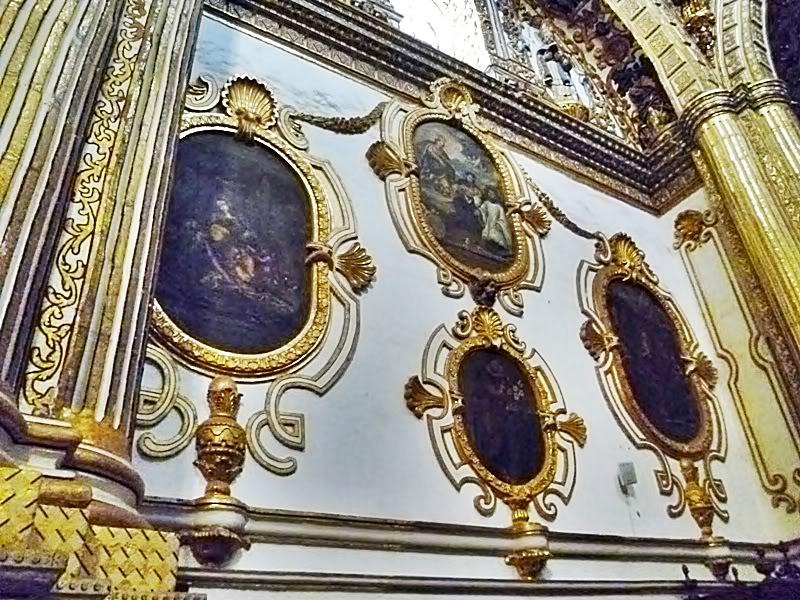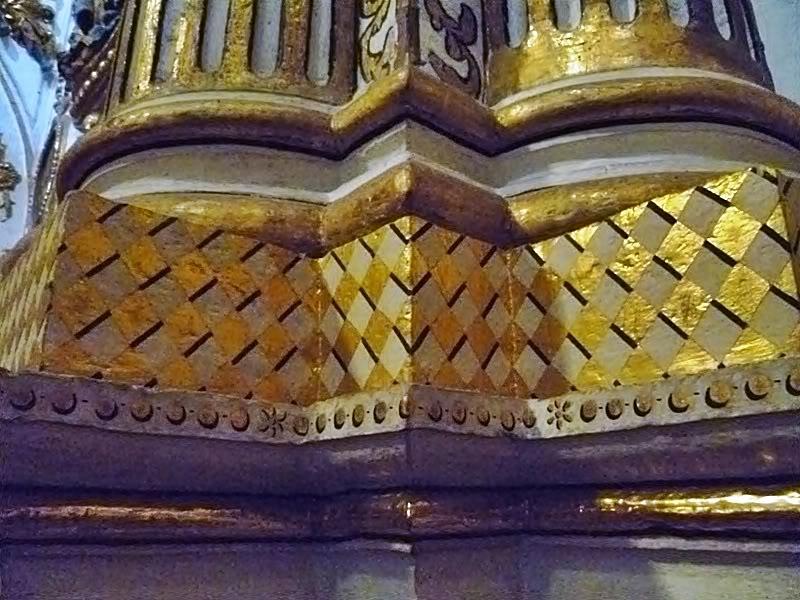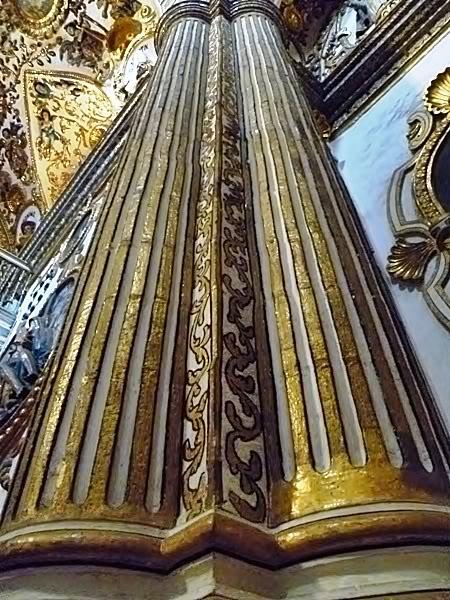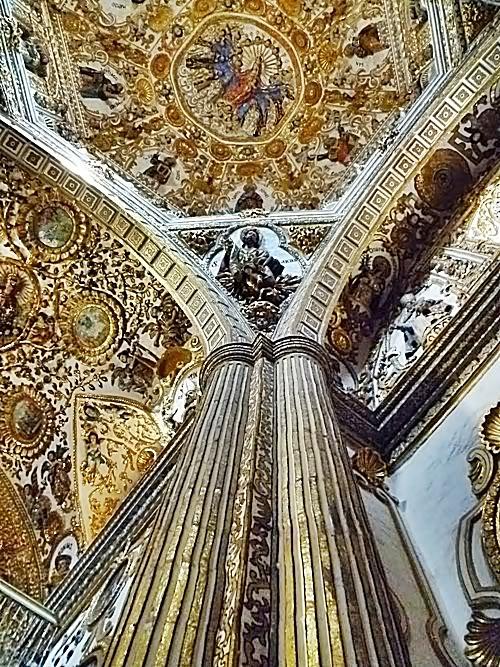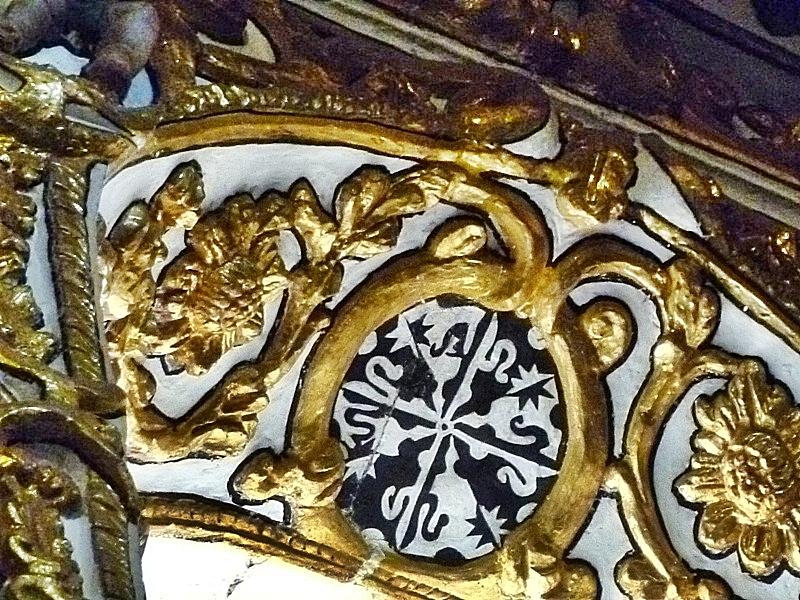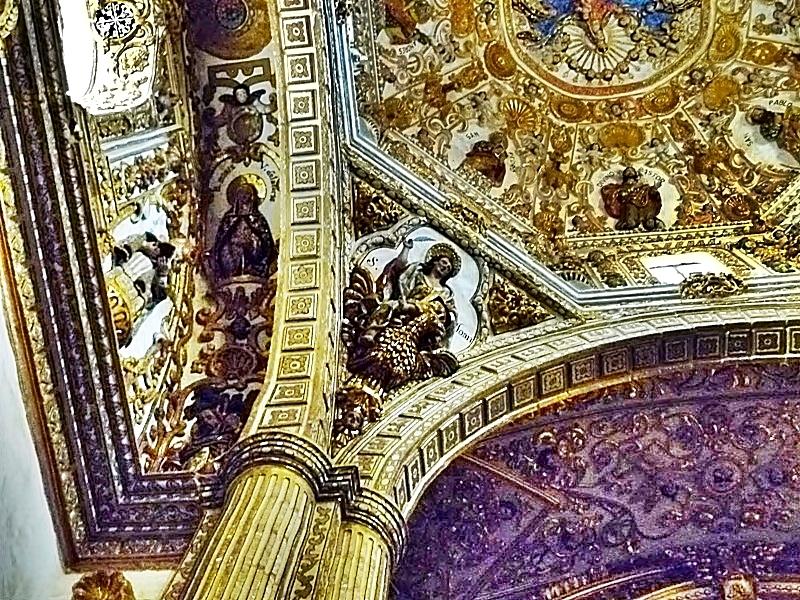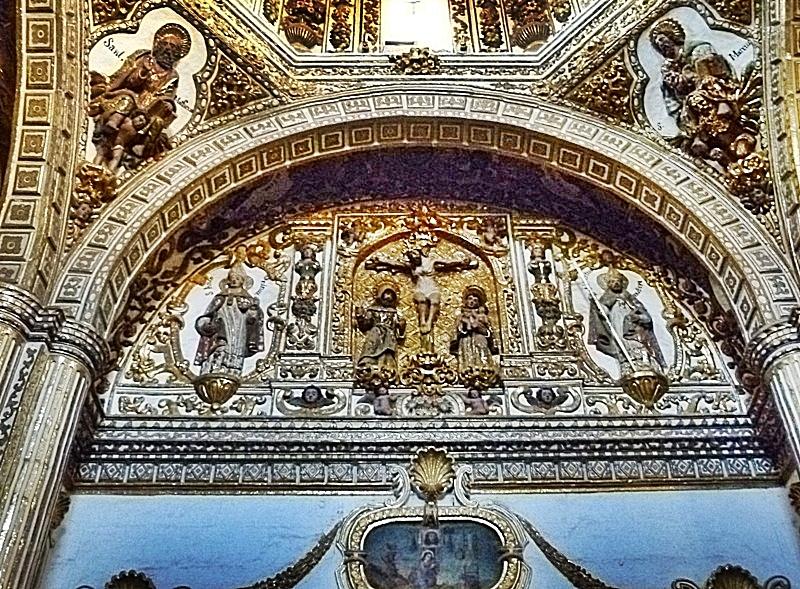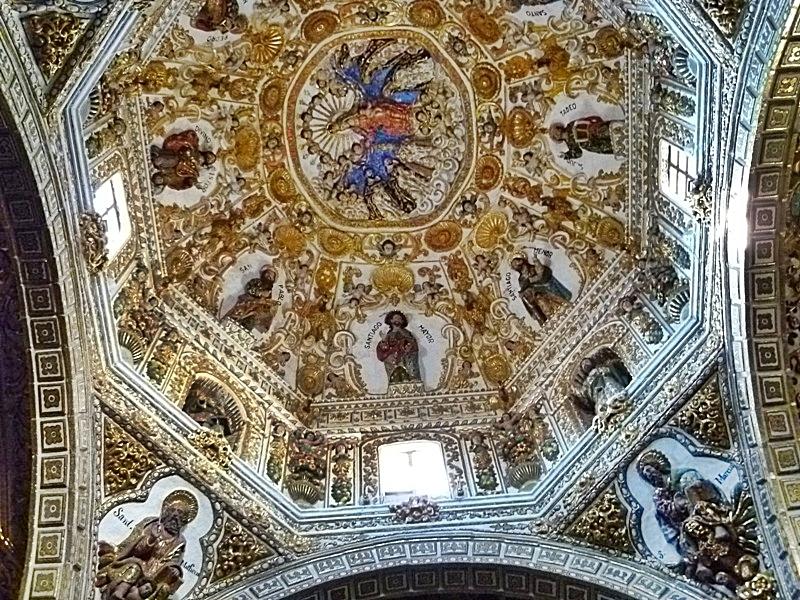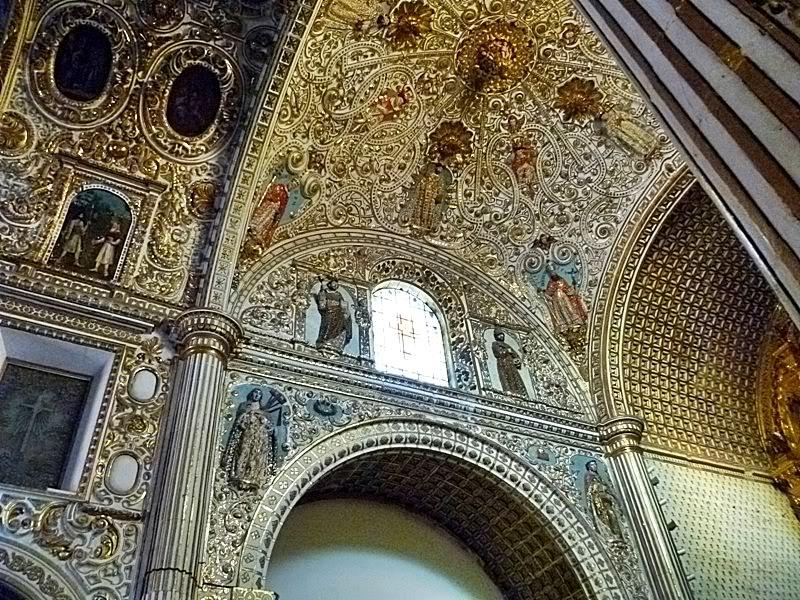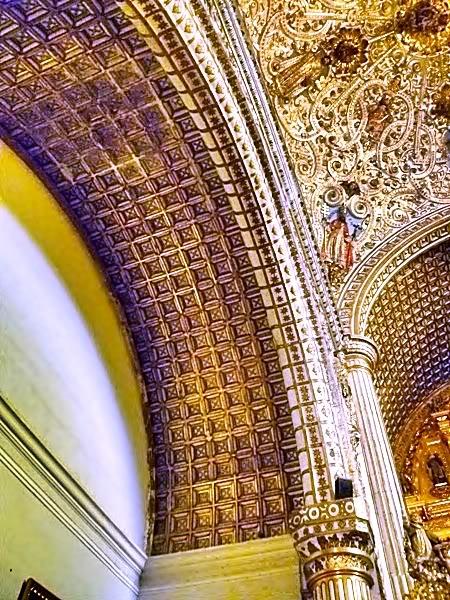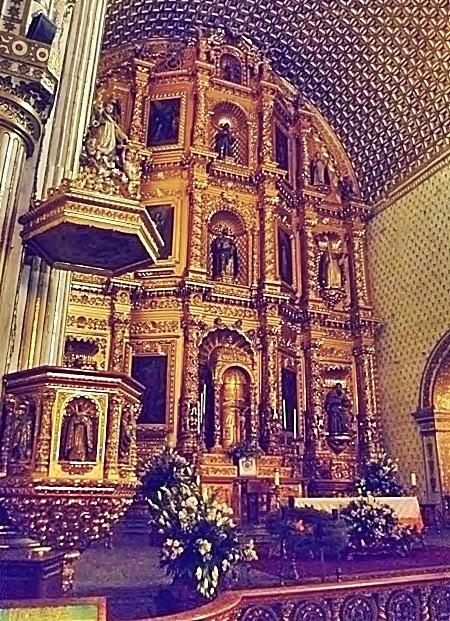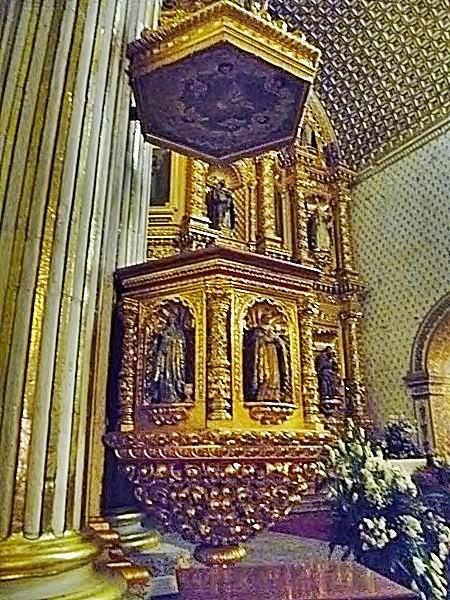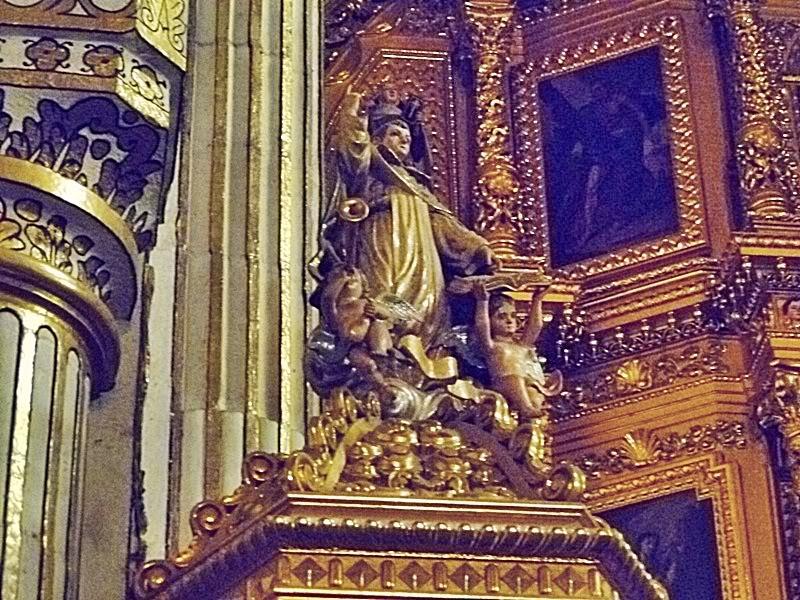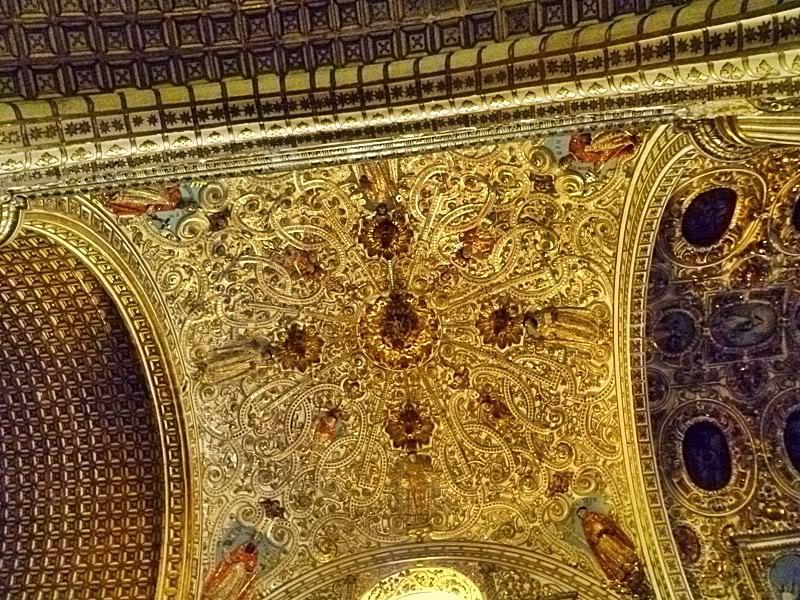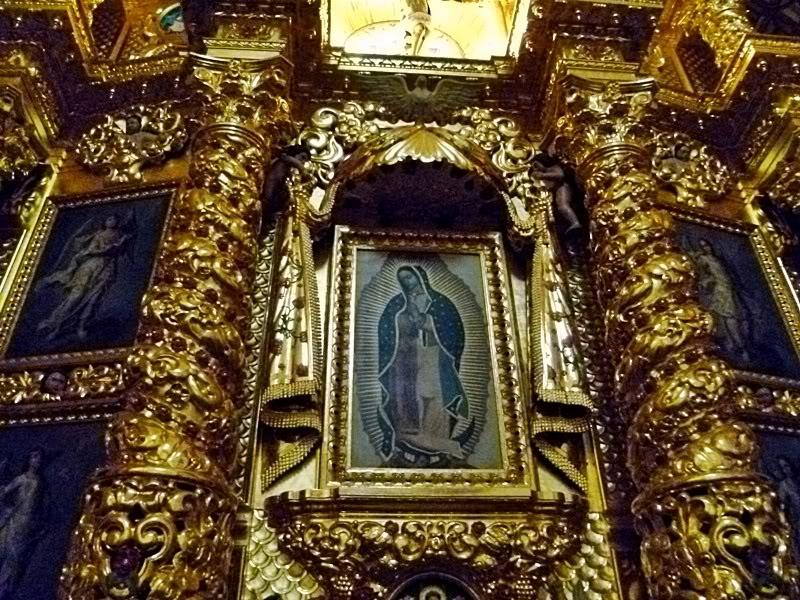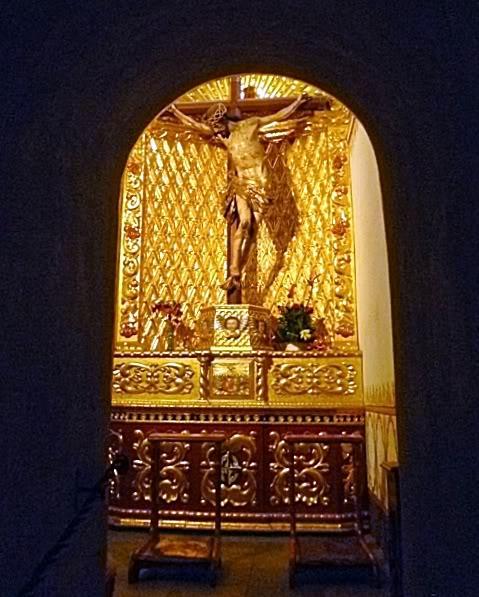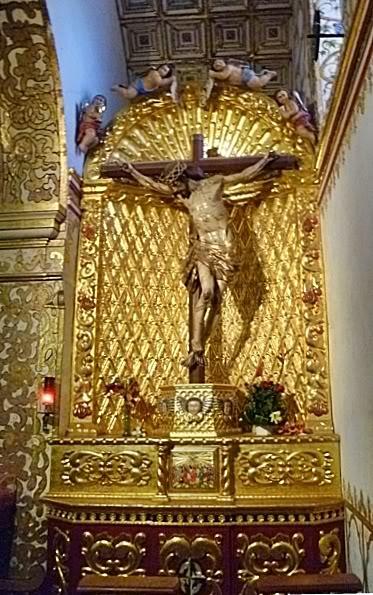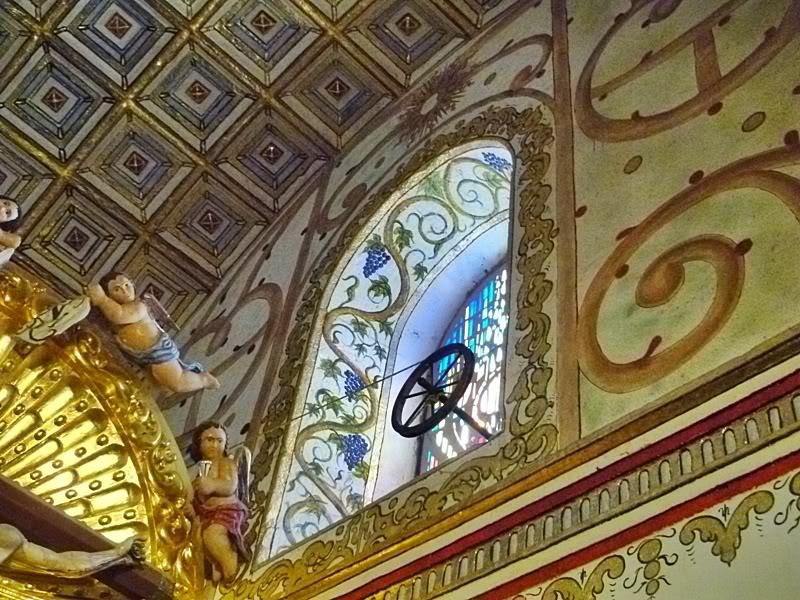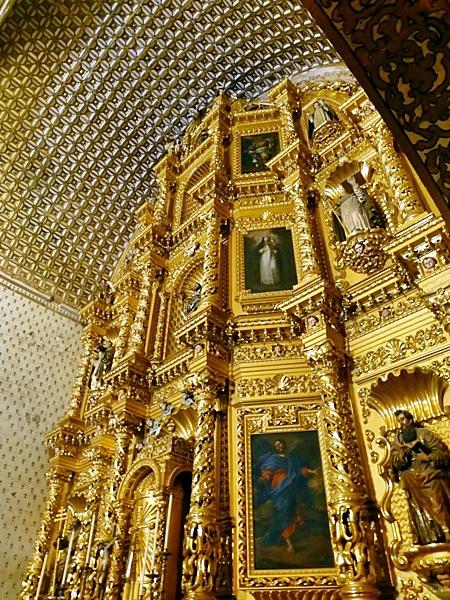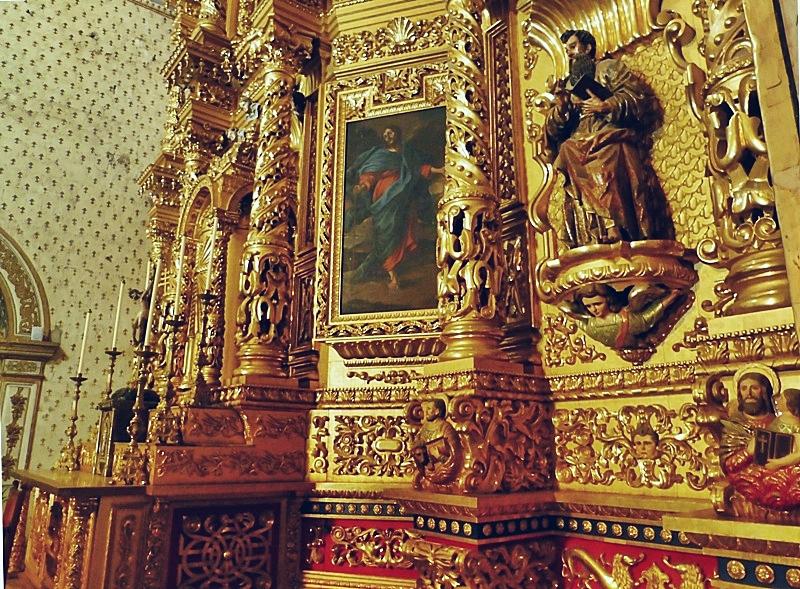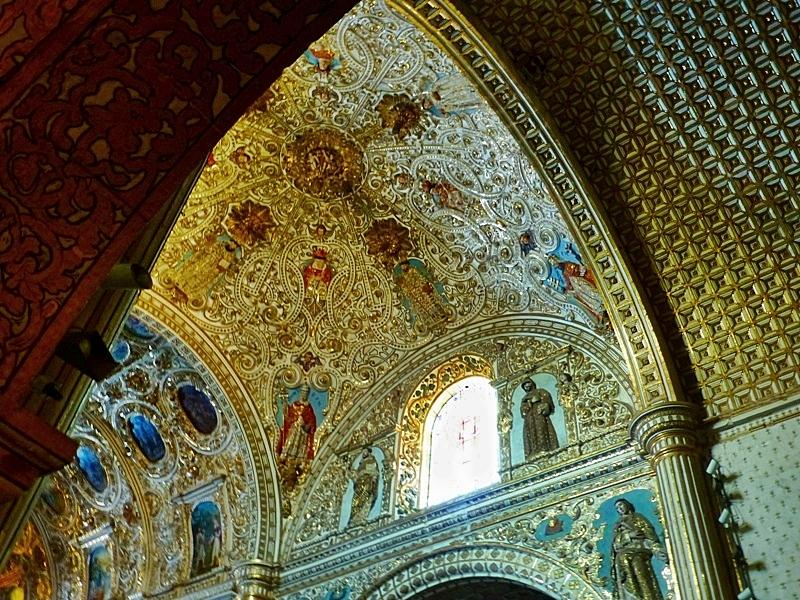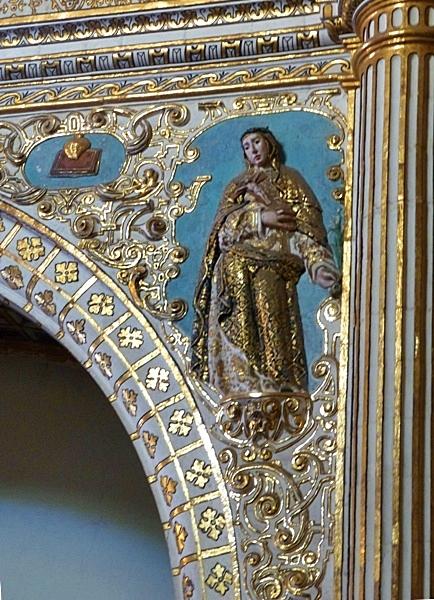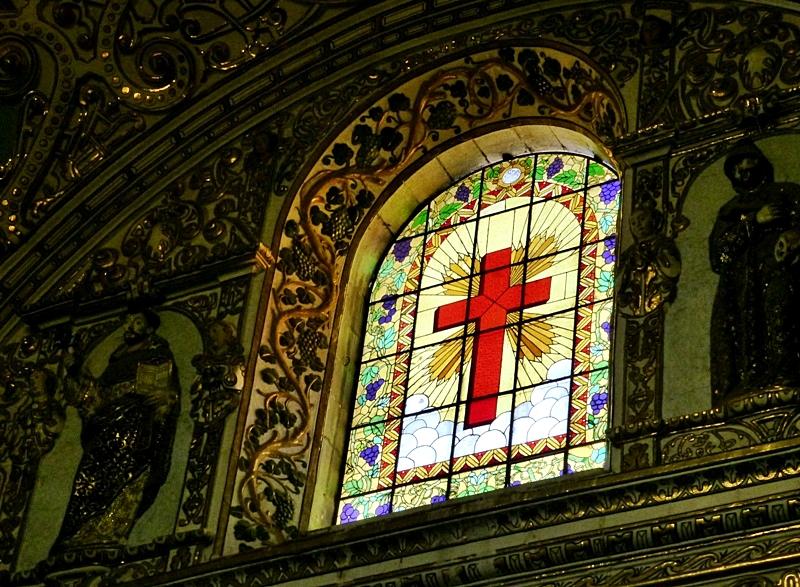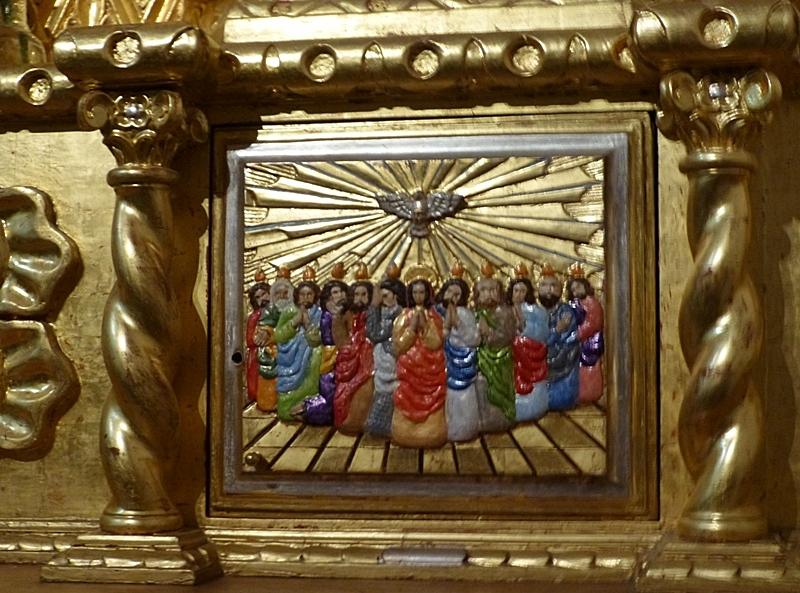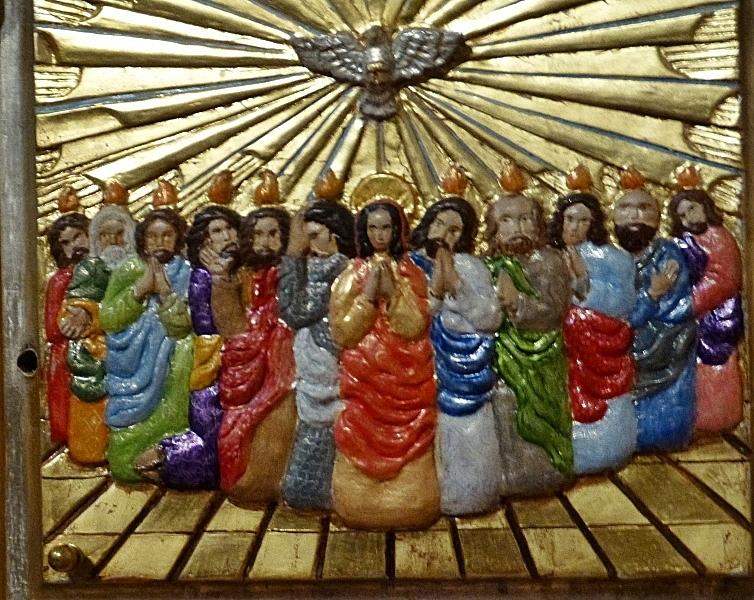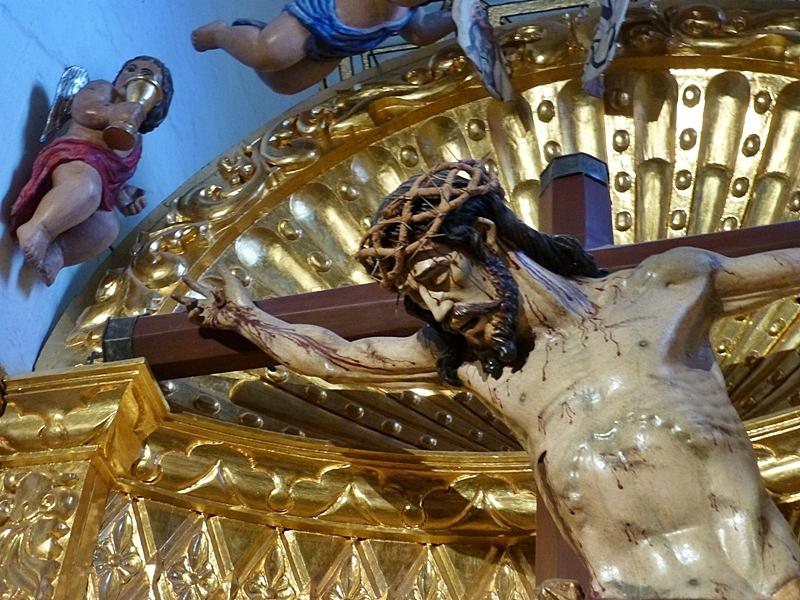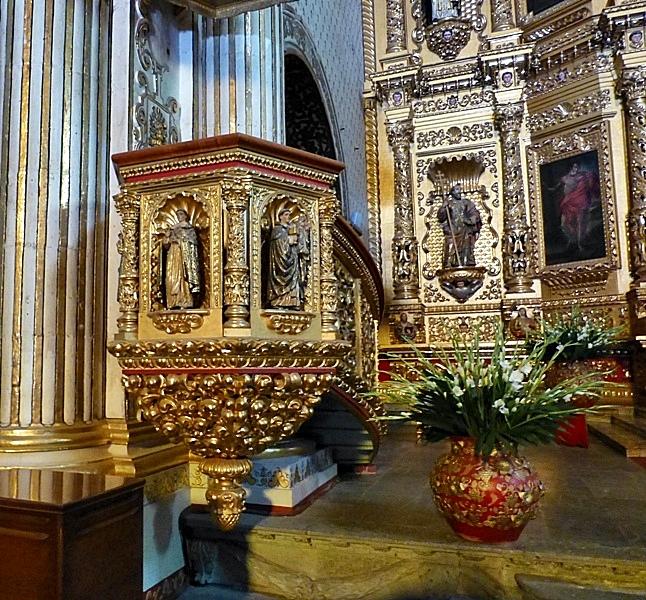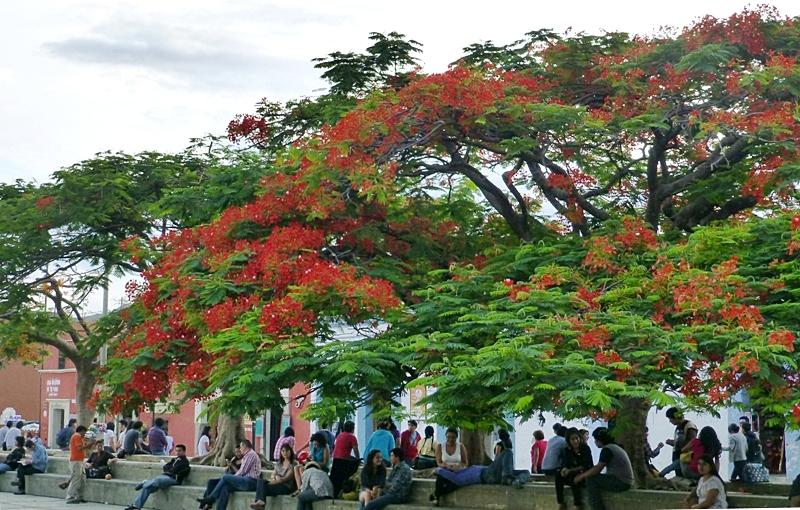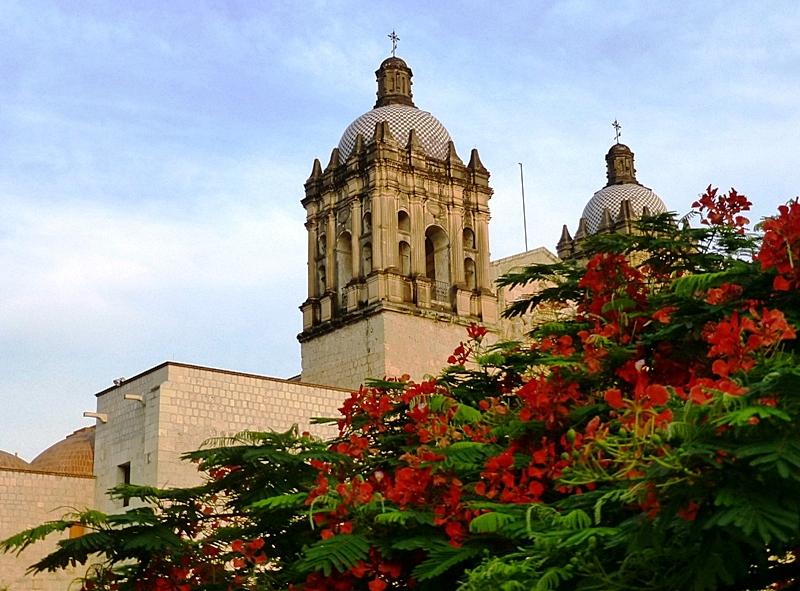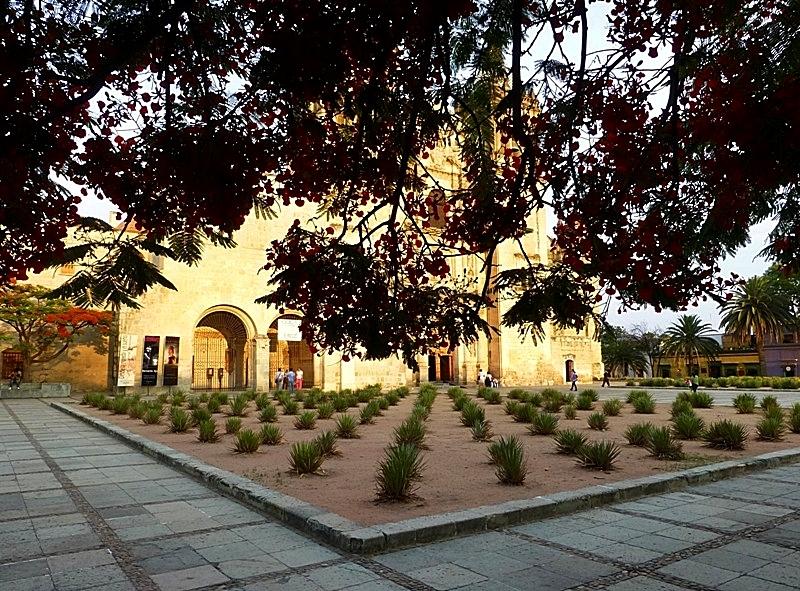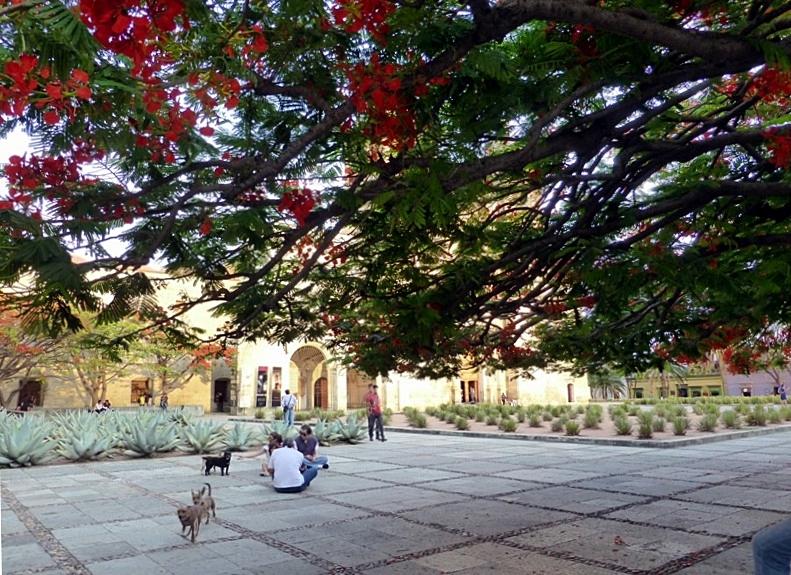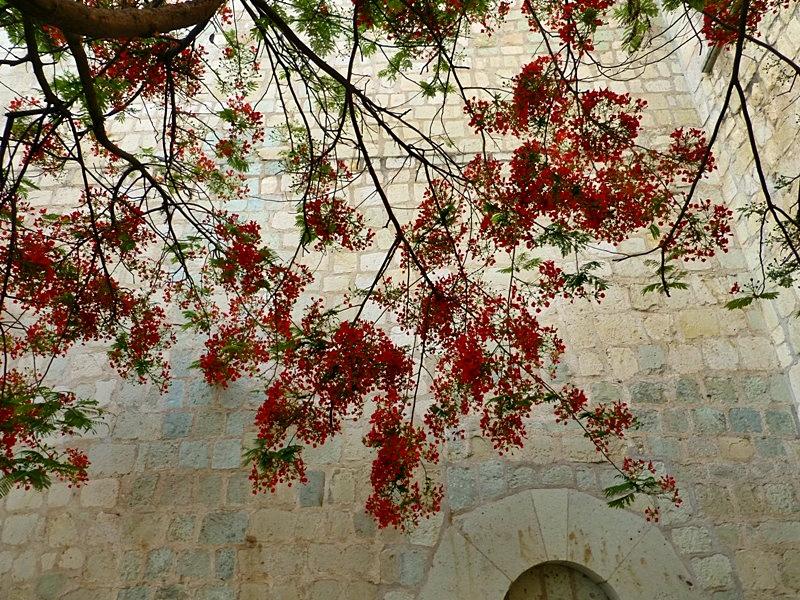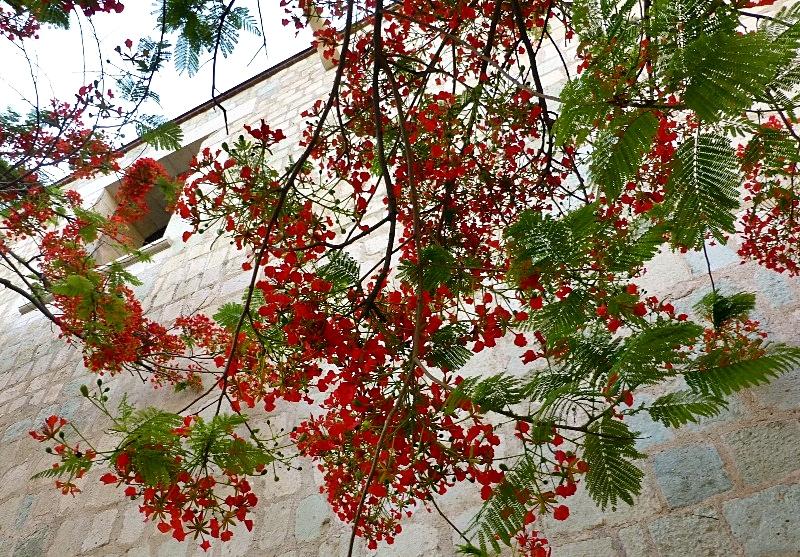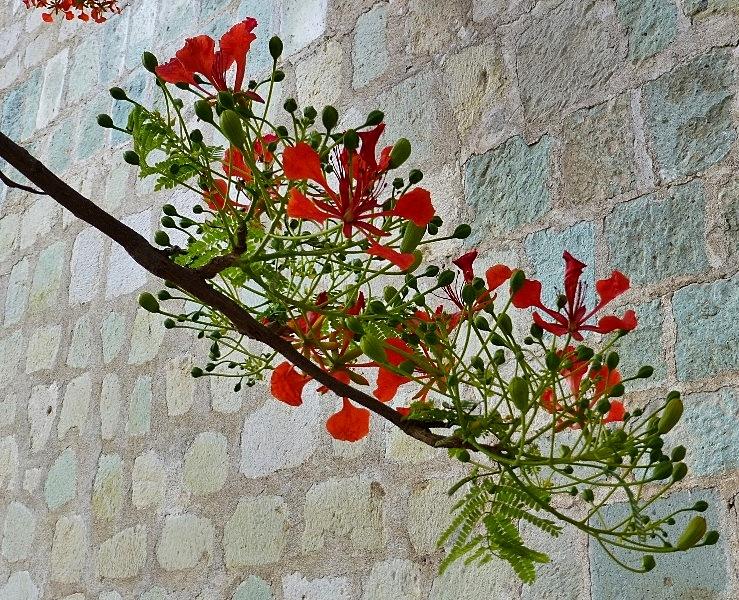|
|
Post by bixaorellana on Dec 9, 2010 22:25:10 GMT
Tuesday was a beautiful day, and as I approached Santo Domingo from the west it occurred to me that I should show one of the major attractions of this city. 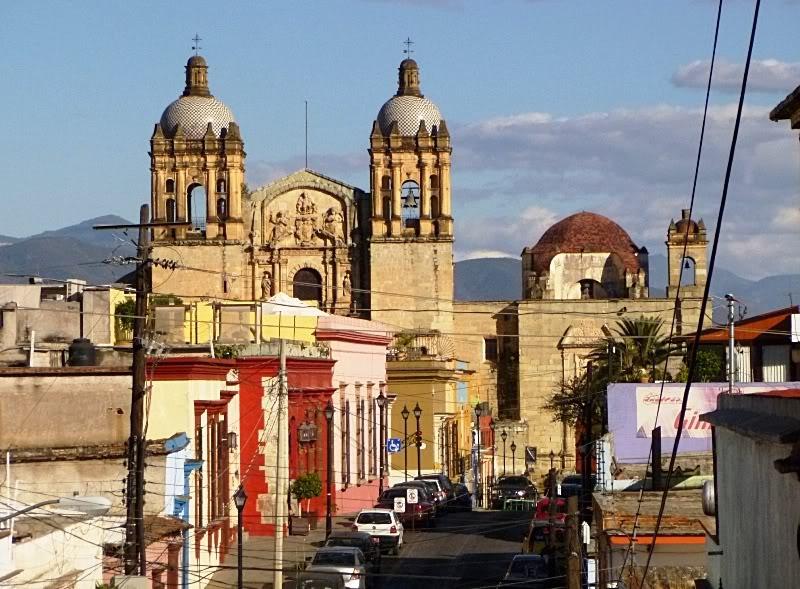 Some history: Some history:Soon after the conquest of Mexico in 1521, Spanish galleons began to arrive regularly at the port city of Veracruz, and the vessels were packed full of the tools and objects necessary for transplanting the power, culture, and religion of Europe to the New World. … The newly claimed territory had been parceled out among the mendicant orders by Charles V and what is now the State of Oaxaca was awarded to the Dominicans. At the time of the Conquest the area was dominated by the great civilizations of the Zapotecs and Mixtecs, though settlements of various less populous ethno-linguistic groups existed as well. Their hegemony was being threatened by the Aztecs, which explains the Nahuatl place names in Oaxaca to this day. Soon after the arrival of the Dominican friars in Mexico in 1526, they began to filter southeastward into Oaxaca via Puebla, cutting a diagonal swath across the State to the coastal trading center of Tehuantepec. source The Dominican foundation of Santo Domingo originated in 1551 when the first Dominican Friars in Oaxaca were given 214 lots of land on the slopes of the Cerro del Fortin. After buying two additional lots, work on the construction of a new priory in the European style commenced and took 50 years in building. A major earthquake on the last day of 1603 was followed three months later by another major quake lasting 15 minutes. the combined effects of these disturbances left much of the city in ruins, but the new Priory, still under construction, was almost undamaged. The monks were moved to Cuilapan, and work on the new Priory was continued. In 1608, the still unfinished Santo Domingo was officially opened and inhabited. In 1623, Santo Domingo became a University with the right to grant degrees in Philosophy and Theology. Finally in 1666 the decoration of the Priory and Church was completed. From 1812 to 1876, during the Mexican struggles for independence from Spain and from the dominance of the church, the complex of Santo Domingo was removed from church control and occupied by a variety of different armed forces, under whose ministrations the priory and church suffered badly. In 1895, the church regained some access to the site and commenced restoration work. In 1902 the church was re-opened for Catholic services, and in 1938, Santo Domingo was formally returned to the Dominican order, and restoration and construction work commenced on a major basis The convent now houses the Regional Museum, the grounds hold the Ethnobotanical gardens. source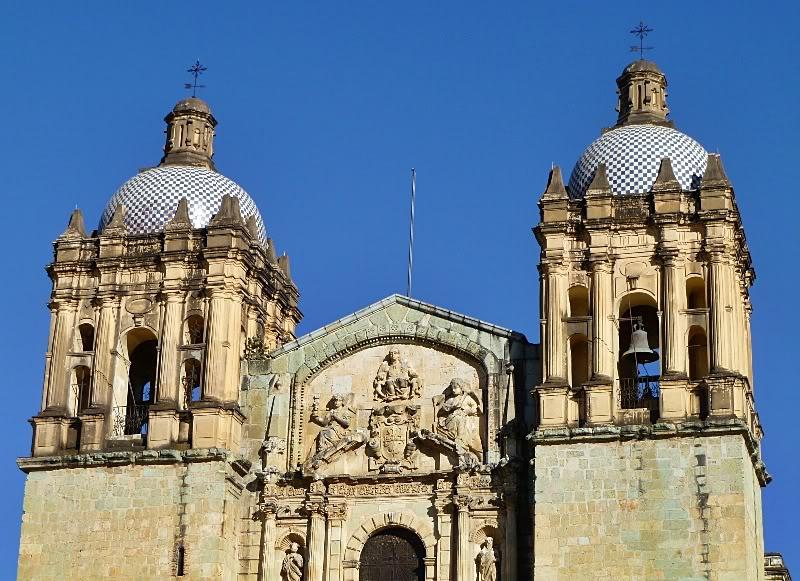 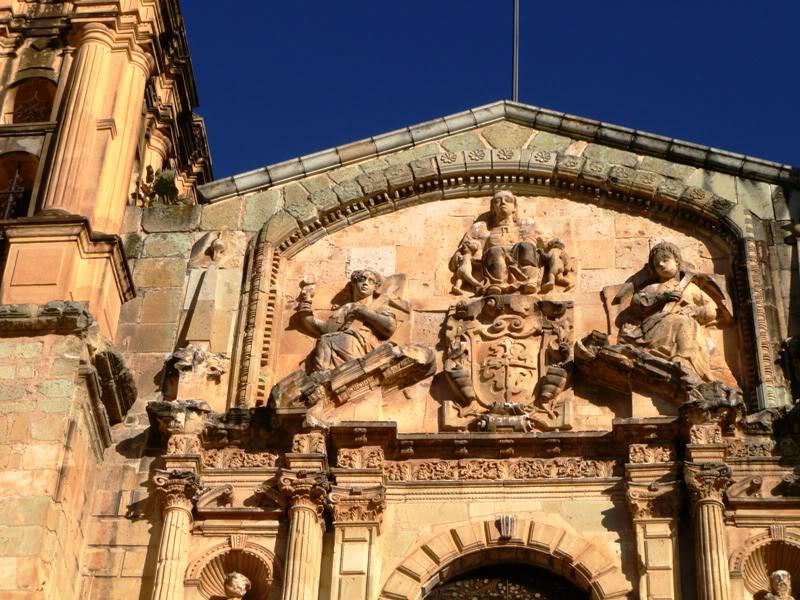 Before we go inside, you all may like to experience approaching the church from the street. Here are three excellent 360° views. (not by me, I hasten to add) 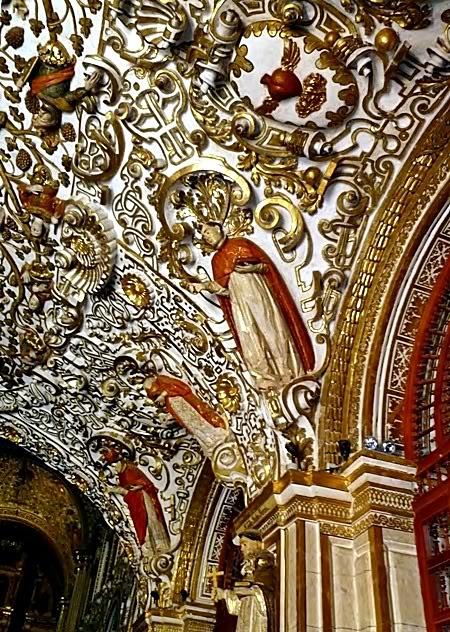 Be warned ~~ this opulence inside is overwhelming, to the point that I've always found it somewhat off-putting, particularly considering the history involved. That said, it is history and part of 17th century sensibility. The amount of gold is dazzling. It's hard to get an accurately colored photograph, as the reflection from all the gilding casts a golden glow over everything. There are signs everywhere saying not to touch the gold and not to use a flash. Take a look here for some architectural background and orientation. 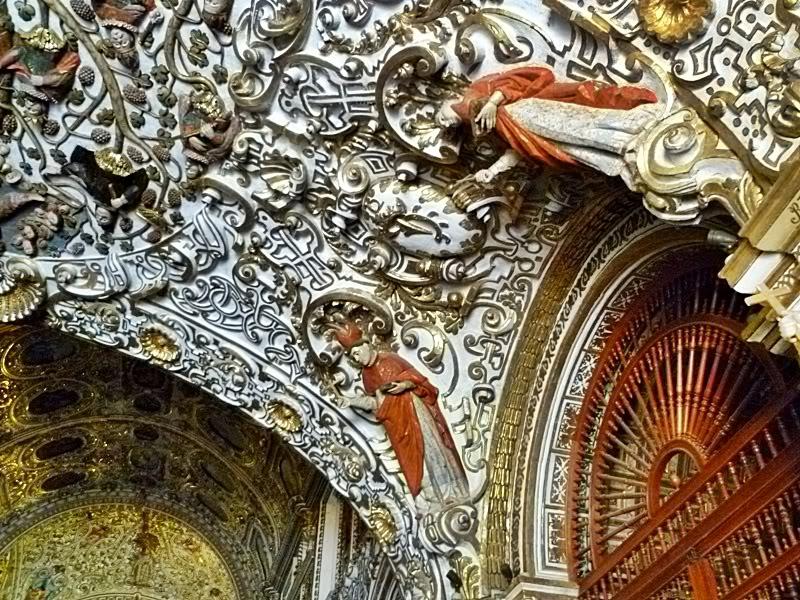 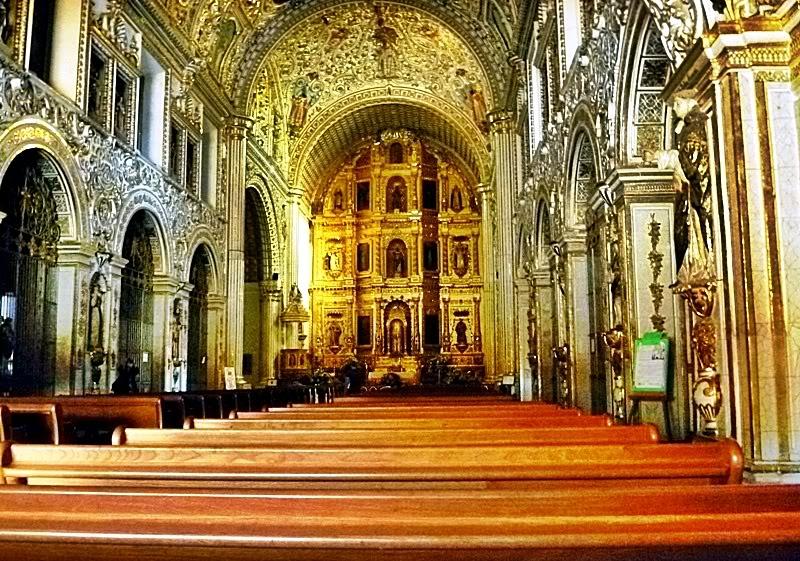 |
|
|
|
Post by bixaorellana on Dec 9, 2010 22:25:46 GMT
This video is short and gives a good idea of the interior, particularly the justifiably celebrated ceiling of the choir loft. The narrator points out that increasingly less is shown of each polychrome figure until at the top, only faces are showing. A small portion of the choir ceiling. Apologies for the color and resolution, but it shows how each figure, even the smallest, was an individual portrait.  Here they are with their companions in a epic example of Spanish colonial baroque --  Actually, the entire church is a portrait gallery, with various supports and columns featuring representations of the friars. Here are just a few: 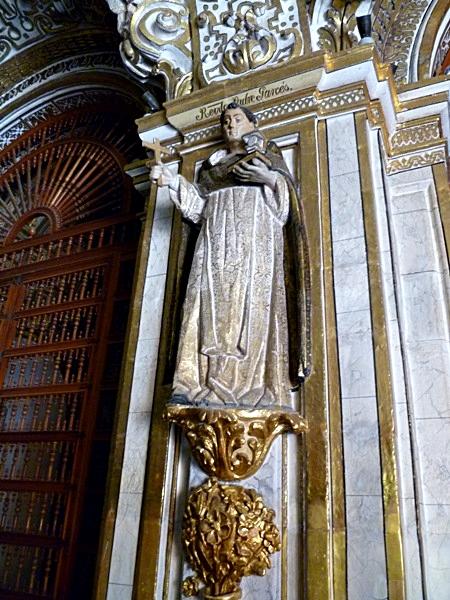 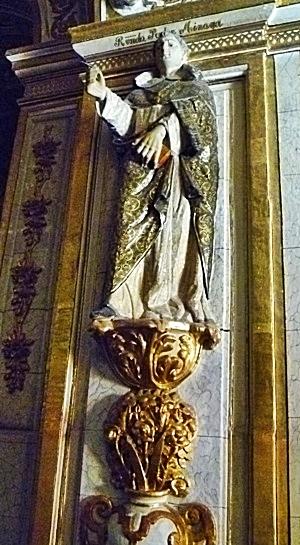 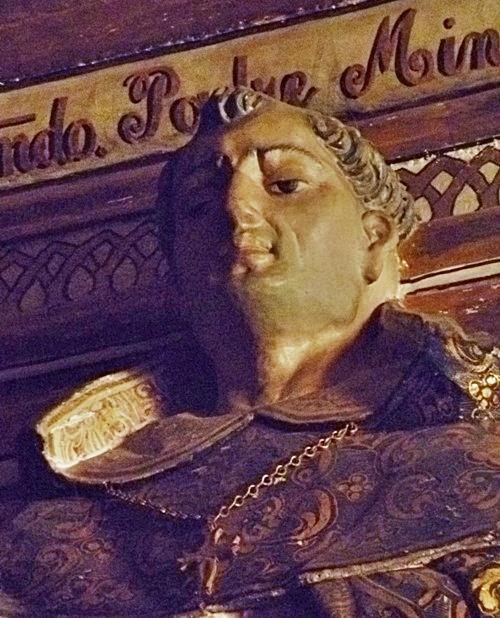 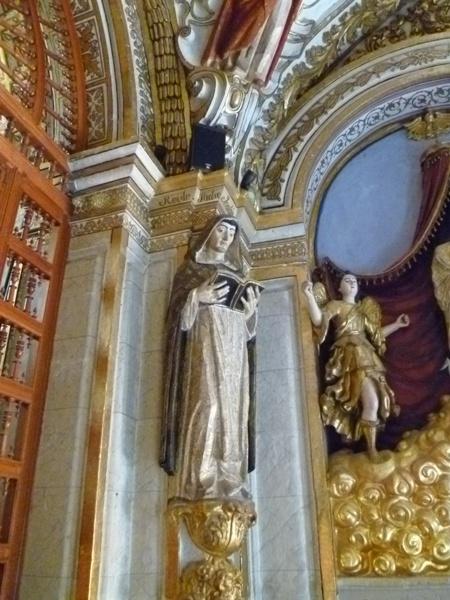  |
|
|
|
Post by bixaorellana on Dec 9, 2010 22:26:29 GMT
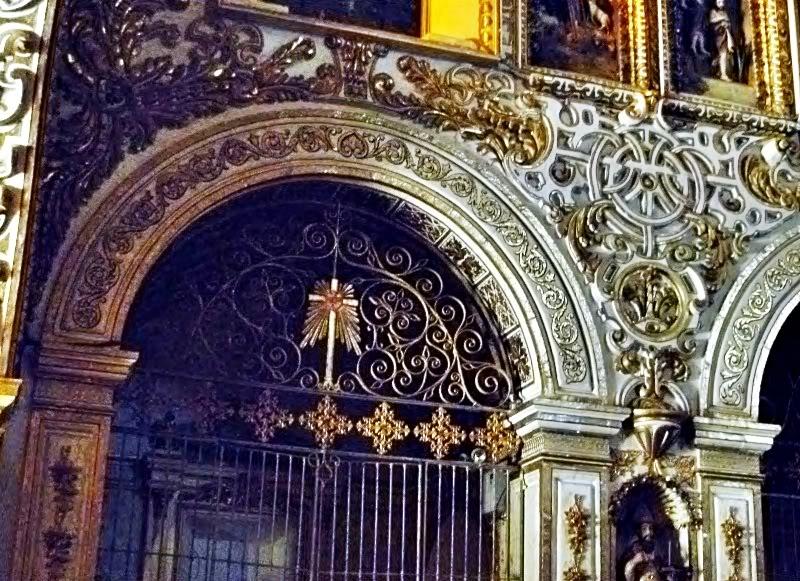 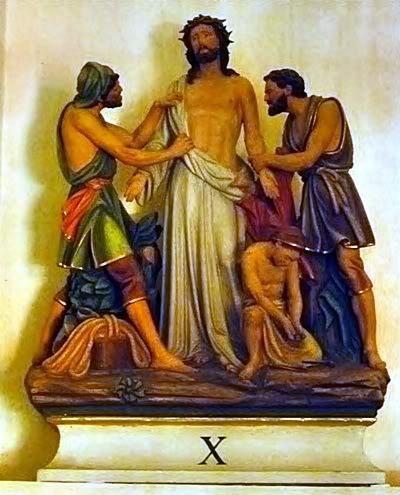 In the last picture in the OP, looking on either side of the pews you can see elaborate gates between the columns. These are small chapels, some barely finished, all very dark. The picture above also shows one. These small chapels also house the stations of the cross, which are disappointingly pedestrian, and of a later era. These were probably purchased much later, during one of the renovations. They hardly fit in with the other features of the church. 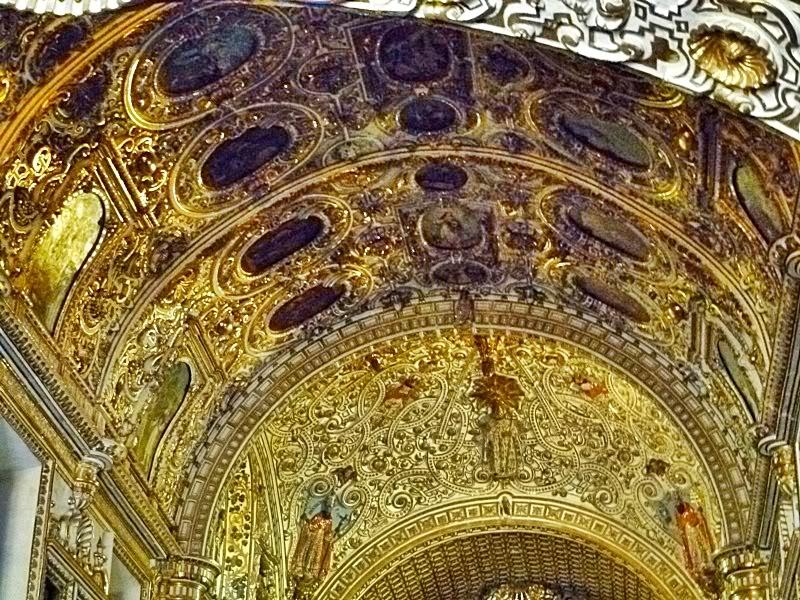 And astounding as those features are, they're almost rivaled by the rosary chapel: 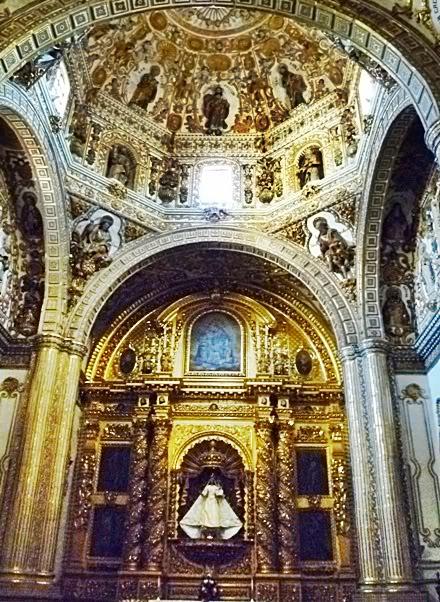 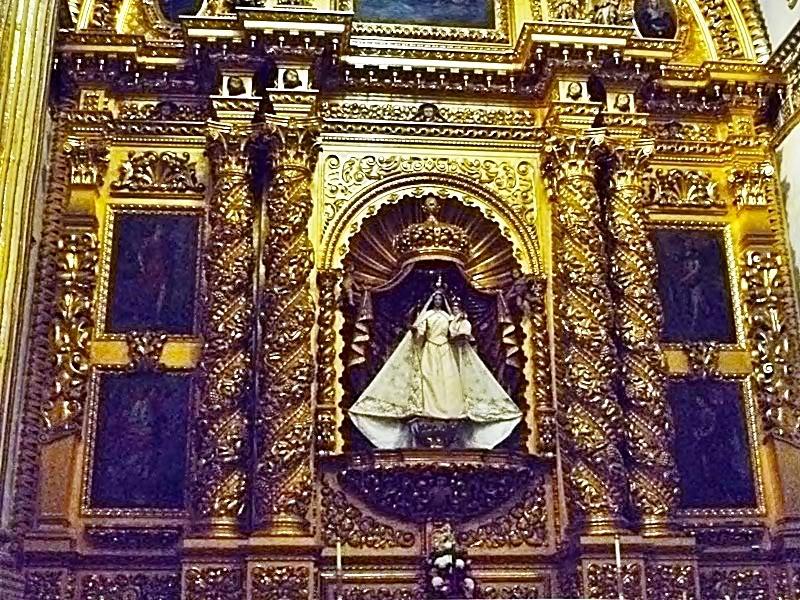 When I went in there were only a couple of tourists there, so I felt okay about reclining on pews to shoot the ceiling. 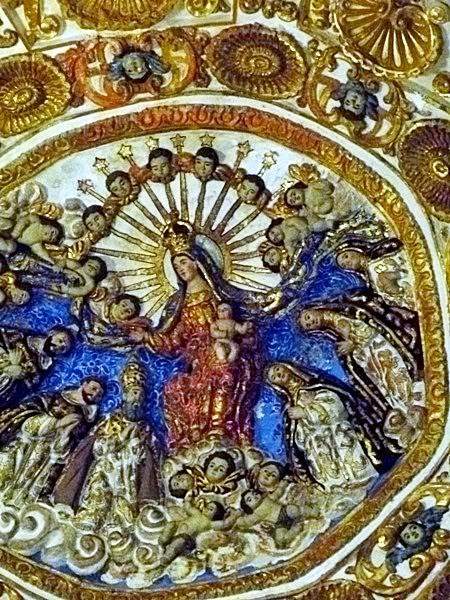 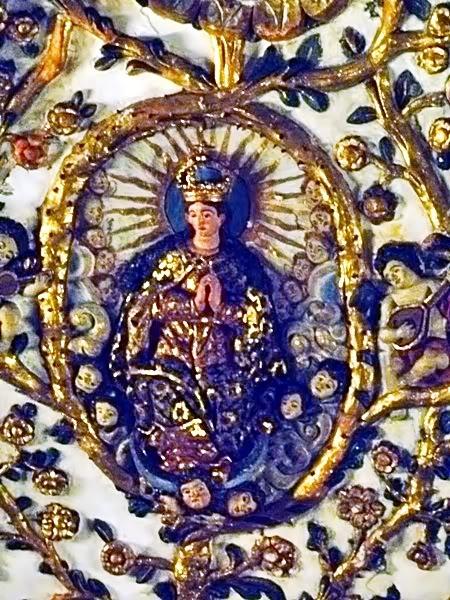 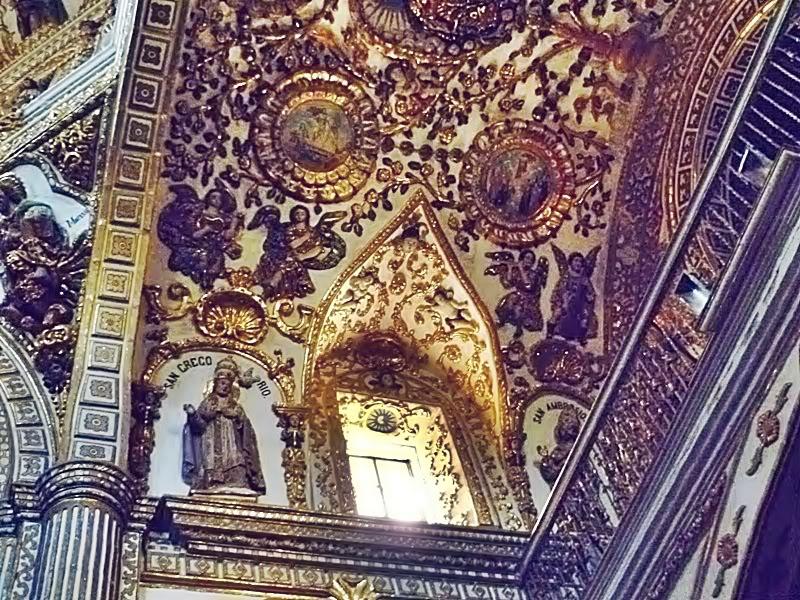 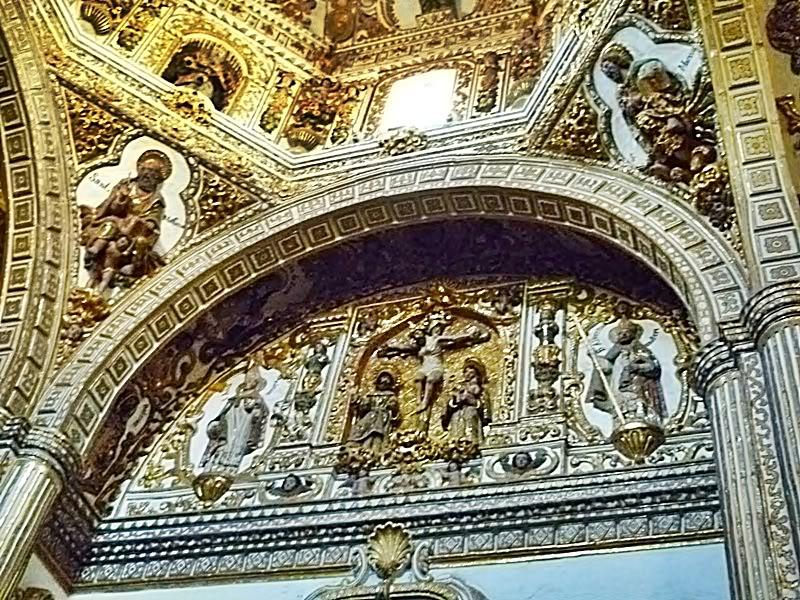 |
|
|
|
Post by bixaorellana on Dec 9, 2010 22:26:56 GMT
|
|
|
|
Post by bixaorellana on Dec 9, 2010 22:27:21 GMT
Let's go back into the main church. After all that decoration in a relatively small space, it's somewhat refreshing to take in some of the simpler aspects. This might be St. Barbara -- I think she is represented with a sword:  This small figure, probably one of the oldest features, is high up on a wall and quite charming: 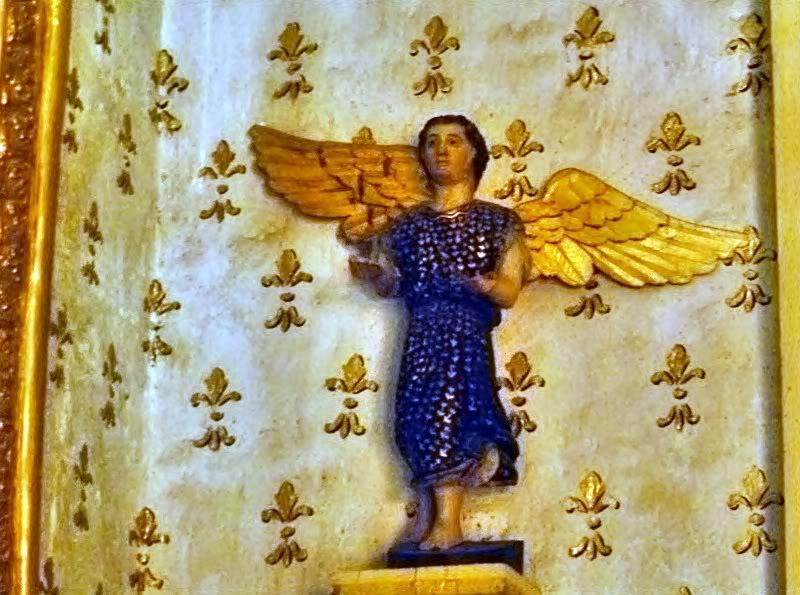 How does St. Martin of Porres, venerated for his humility, feel about his fancy surroundings? From the style and size of his statue, I suspect it's not original to that niche. He gets flower paintings on either side. 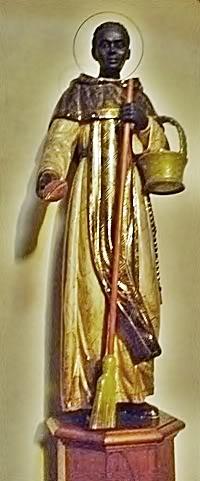  A quick glimpse out the side door reassures us that the real world is still there. 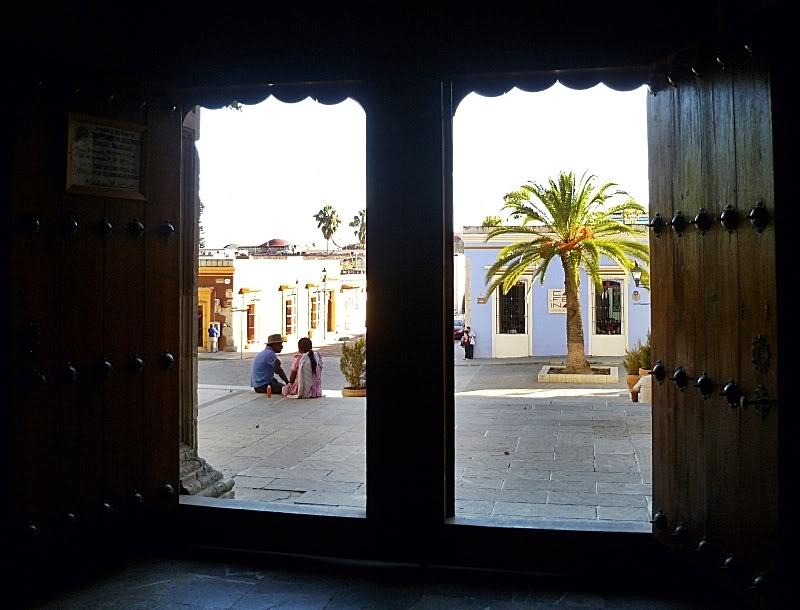 And I will leave you with that thought for the moment. Back in a bit, as, saints preserve us, there is even more to see. |
|
|
|
Post by Deleted on Dec 10, 2010 0:17:44 GMT
Oh,this is just stunning Bixa!! I remember the inside of this church and it is though it was burned in my brain when I was looking at these photos,how vividly I recall it now. While I have seen many churches throughout different parts of Mexico,this one in Oaxaca was truly one of the highlights. The gilding is as you say ,magnificent. I remember taking loads of pics of it and have them somewhere (pre-digital). The paintings of the flowers in the next to last shot are also a stand out in my mind. Just Beautiful. Thank you for this. You done good!!  I will revisit this thread many times. |
|
|
|
Post by bixaorellana on Dec 10, 2010 0:55:08 GMT
Whew! I'm so glad you are enjoying it, especially since I was concerned about the quality of many of the pictures. It's hard to take pictures in all that gloom. With the darkness within and the bright afternoon light outside, I only managed to capture one bit of stained glass, coming up soon.
|
|
|
|
Post by fumobici on Dec 10, 2010 1:43:51 GMT
Magnificent really. I lack the eloquence to do the place justice, so I'll just thank you for the tour. So different from the French and Italian cathedrals I'm familiar with. Do Spanish churches have that look?
|
|
|
|
Post by bixaorellana on Dec 10, 2010 1:44:34 GMT
|
|
|
|
Post by bixaorellana on Dec 10, 2010 1:57:54 GMT
In the photo of the main altar in the previous post, you can see a portion of an arch on the right side. That chapel is accessed by a narrow wooden walkway leading from the Guadalupe altar and around the end of the altar rail, through a deep archway. As I traversed the walkway and entered the arch, I was almost knocked over from the scent of the flowers on the altar. In all that space, they don't appear to be so many, but they were plentiful and highly scented. |
|
|
|
Post by bixaorellana on Dec 10, 2010 2:15:43 GMT
Thanks, Fumobici. I'll let the wikipedia article answer for me: Towards the end of the 15th century, and before influencing Latin America with its Colonial architecture, Spain itself experimented with Renaissance architecture, developed mostly by local architects. Spanish Baroque was distinguished by its exuberant Churrigueresque decoration, developing separately from later international influences. Do follow the links, as they show examples. The main page shows Santa Prisca in Taxco, Guerrero, which makes Sto. Domingo look restrained by comparison. Please come back for the rest of tour through a place where all that's gilded really is gold. |
|
|
|
Post by bixaorellana on Dec 10, 2010 2:50:43 GMT
Let's start wending our way out. We can stop to admire again this section to the right of the front door, so nicely lit by the afternoon light. 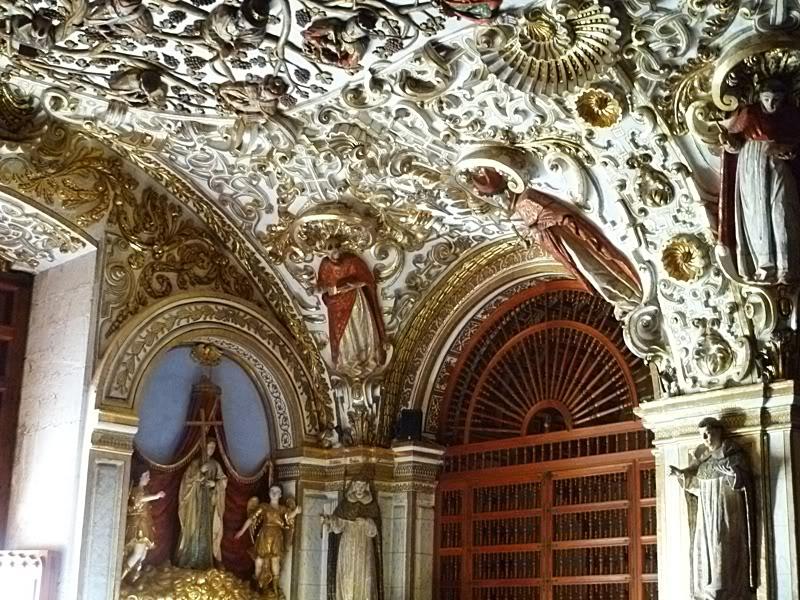 But I am more taken by the group to the left of the door, and the lovely face of the main figure. There seem to be several saints whose identifying symbol is an anchor. My feeling is that this figure represents hope, traditionally represented as an anchor. The two angels are quite typical of the colonial period.  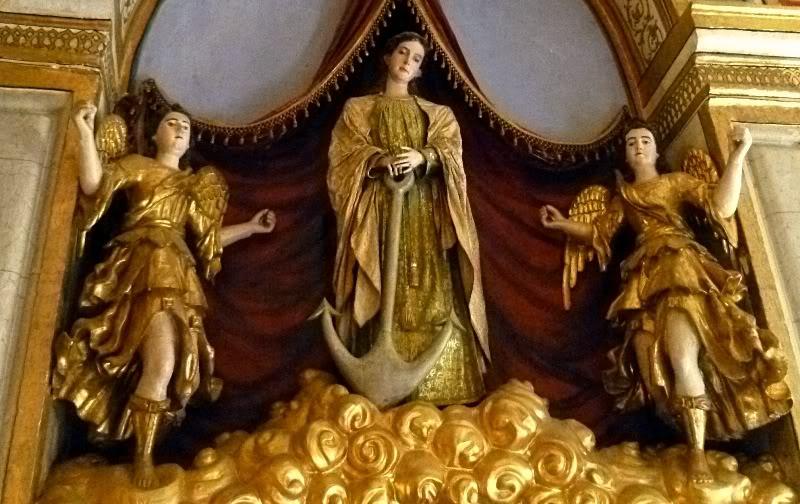  This temple was constructed at the end of the 16th century by the Dominican fathers, This temple was constructed at the end of the 16th century by the Dominican fathers,
who decorated it into the middle of the 17th.
In 1862 it was converted to a cavalry barracks because of the war.
And in 1869 they destroyed the 14 altars, railings, pulpit, etc.
In 1902 it was reopened to religious use after having been put to rights by the church authorities.
And since 1938, the date the friars were allowed back, we continue working to restore its old artistic value.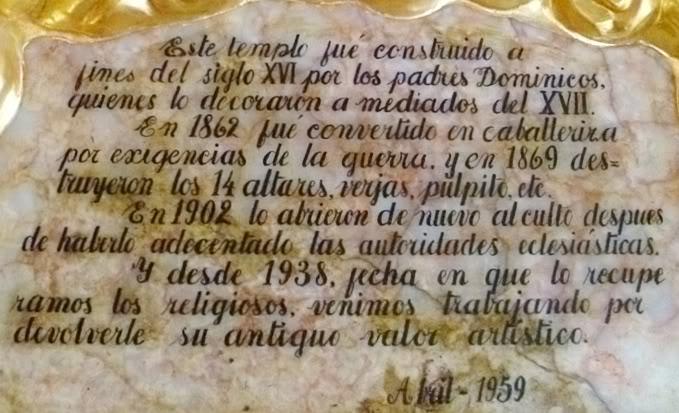 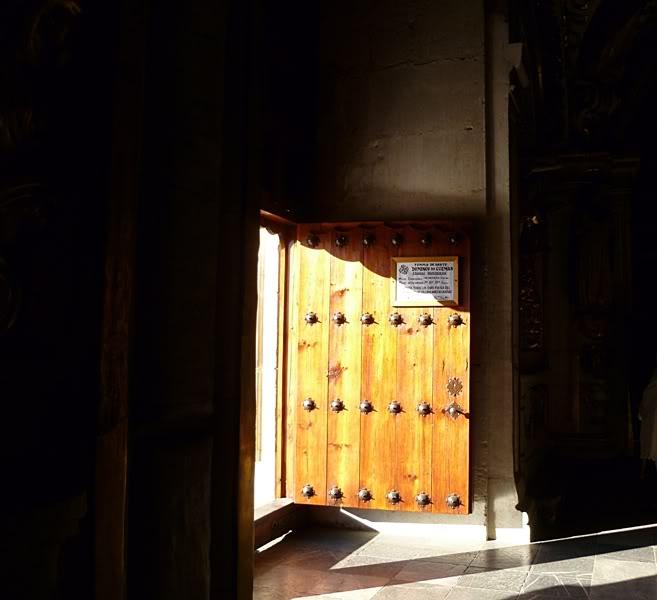 |
|
|
|
Post by bixaorellana on Dec 10, 2010 3:13:39 GMT
And here we are outside again, looking up at the decoration on the front of the church. Like so much else in Oaxaca, it draws much of its beauty from the native green quarry stone. 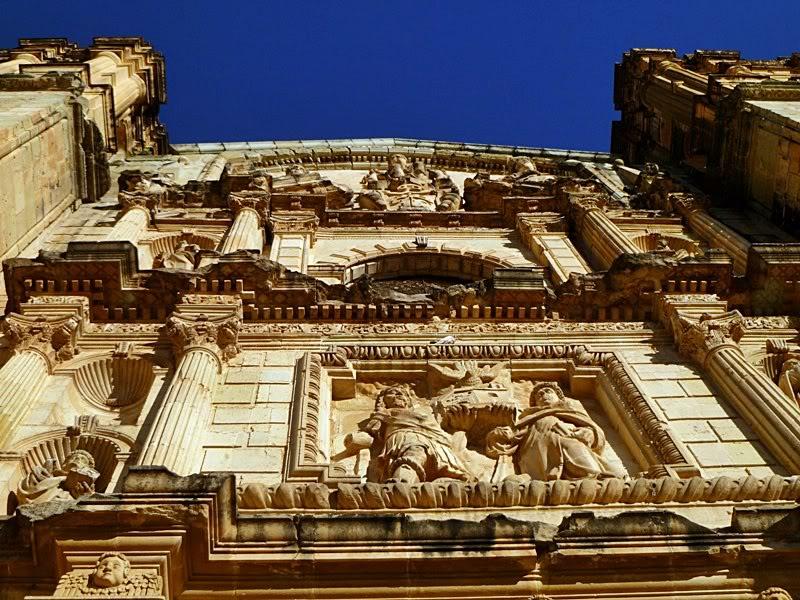 Green stone and winter afternoon sun are a beautiful combination on the side wall of the cathedral and the chapel. 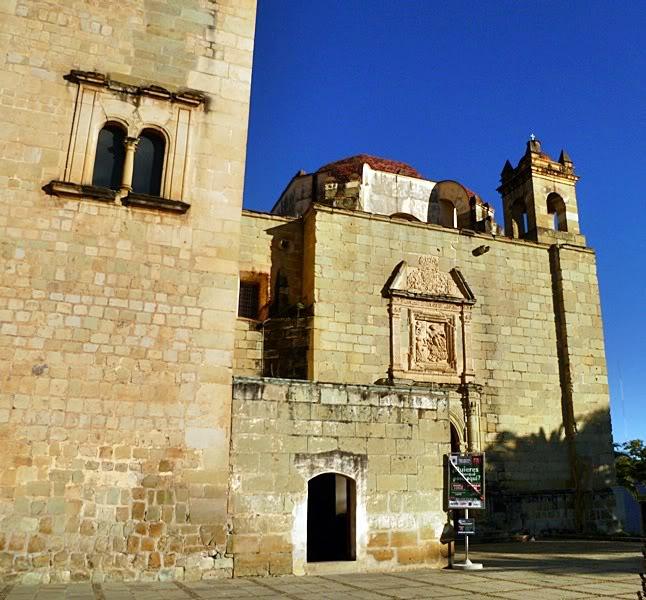 The planting in front of that section: 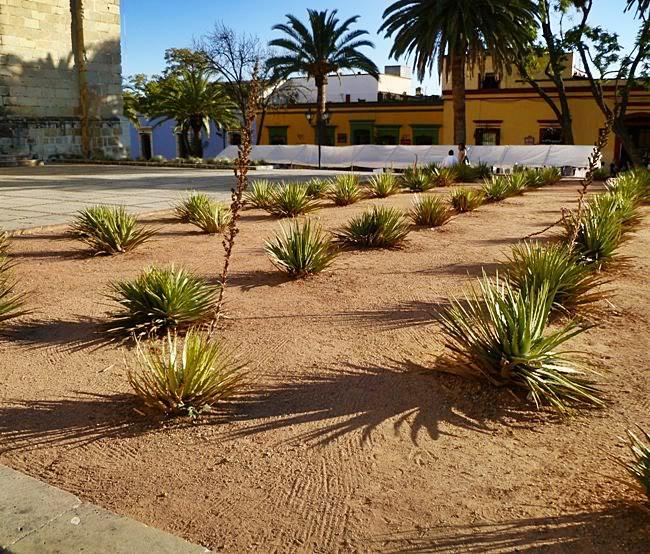 Some of the smaller figures near the front door don't even hint at the glories within. 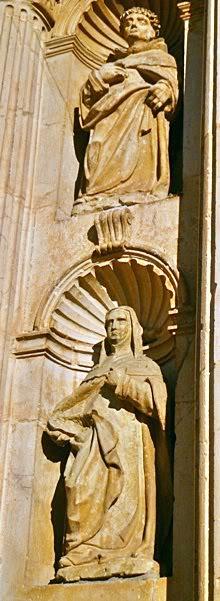 Part of the old convent, jutting out on one side of the vast space in front of the church, shows in its solid massiveness its utility as a barracks, prison, etc. 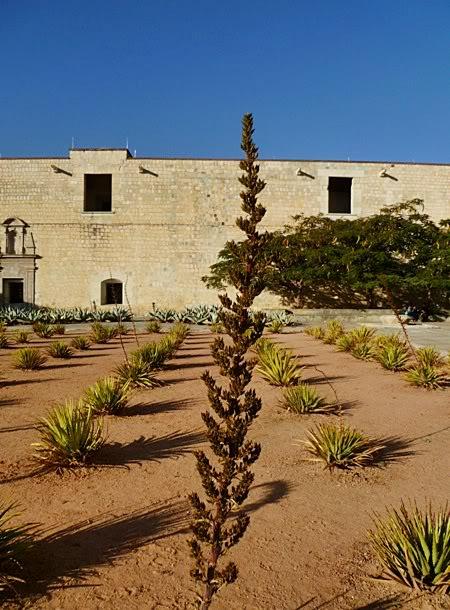 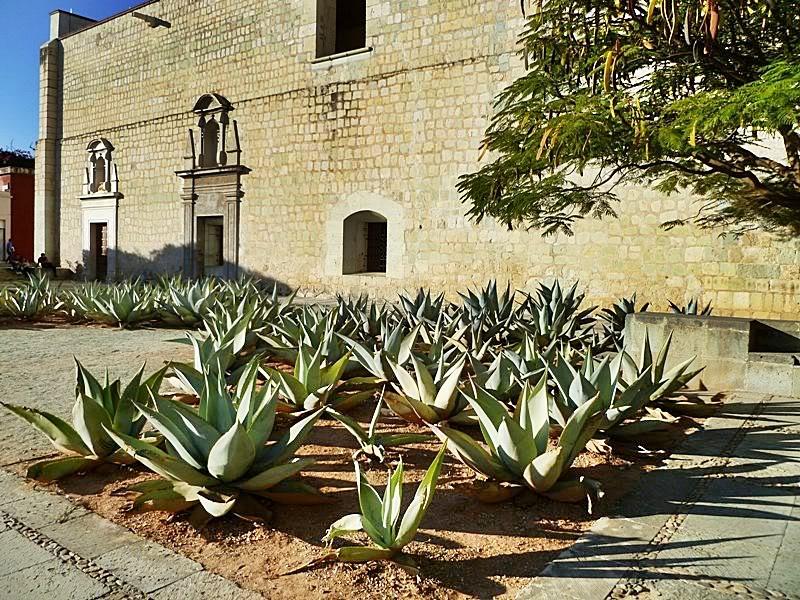 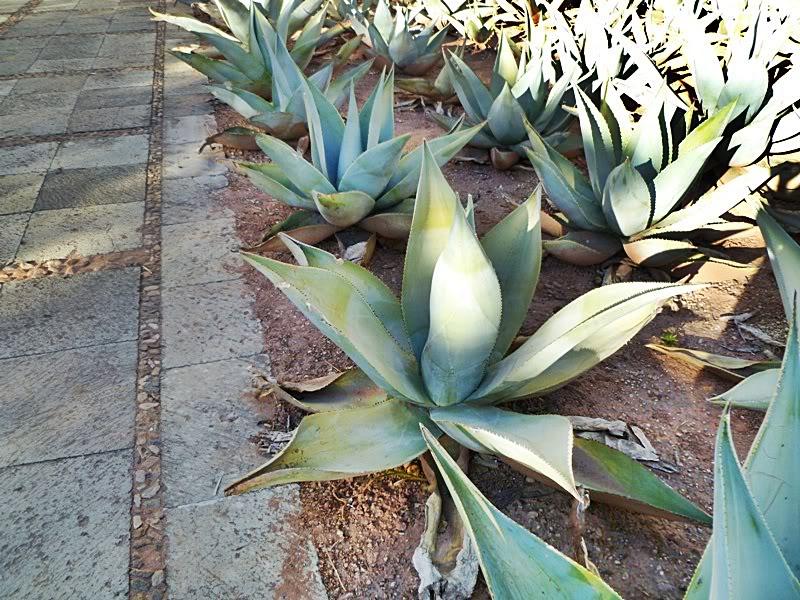 |
|
|
|
Post by bixaorellana on Dec 10, 2010 3:21:23 GMT
Is there anything left to see? As it happens, quite a bit. The convent is now a cultural center, housing a wonderful museum and a glorious botanical garden featuring native plants of Oaxaca. We'll do that on some other days. The entrance to the cultural center is in the ell formed by the church and convent. 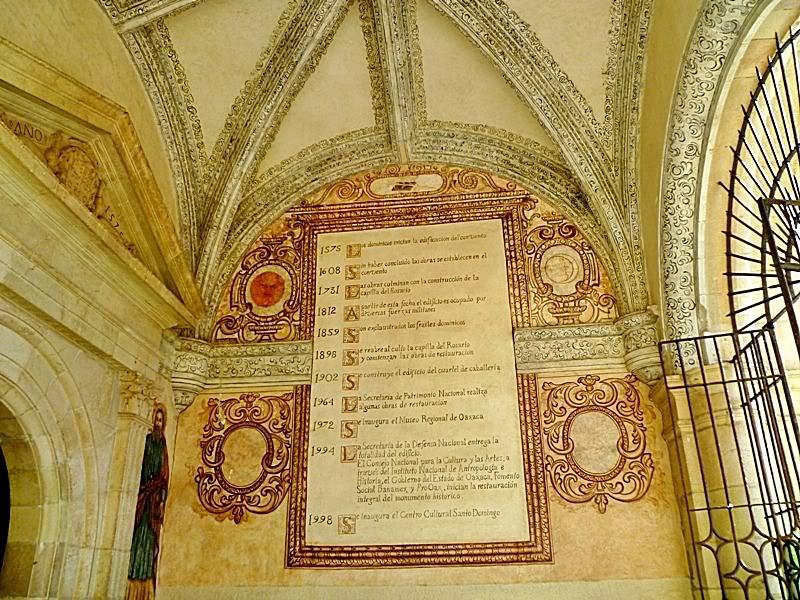 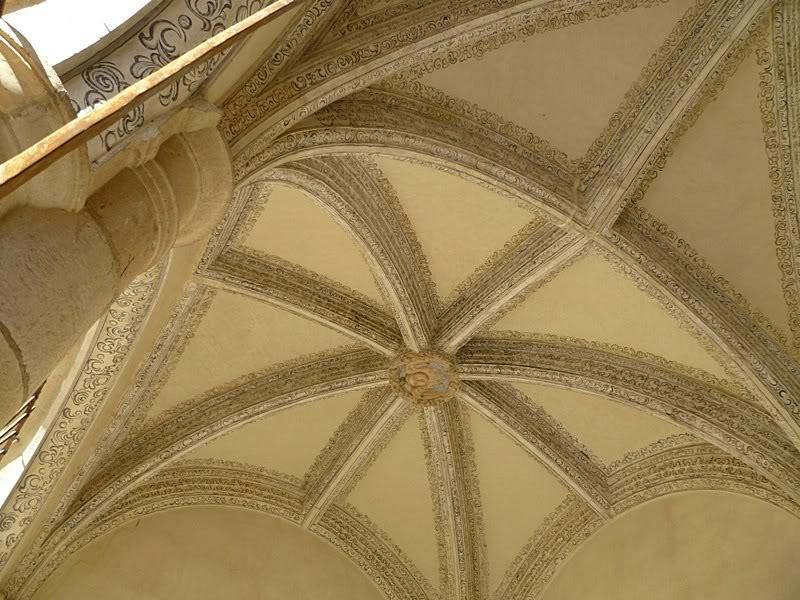   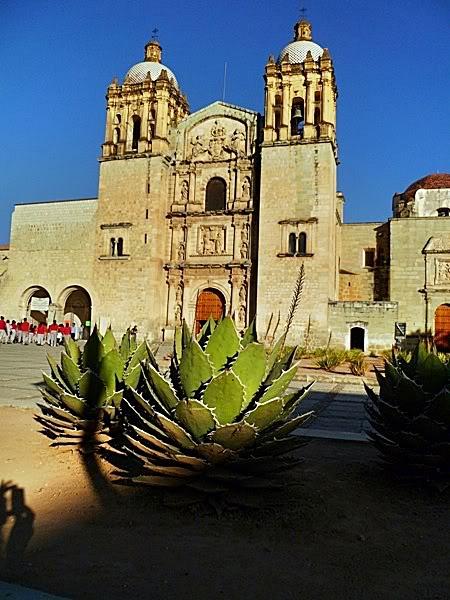 |
|
|
|
Post by mickthecactus on Dec 10, 2010 9:05:48 GMT
Churches don't really do it for me but Agaves............. That's a different thing altogether. The last picture is fantastic.  |
|
|
|
Post by lola on Dec 10, 2010 17:57:02 GMT
Gorgeous, Bixa. Thank you!
I like churches AND agaves.
|
|
|
|
Post by Deleted on Dec 12, 2010 6:58:17 GMT
I really like baroque architecture in moderation, which is certainly what this is -- it's not as though all of the rest of Oaxaca looks like that!  I think it's an extraordinary church, and is rather fascinating that it can be such a different concept from French or Italian gothic, where the ornate stuff is mostly on the outside and the inside is plainer. The Mexican version keeps a total surprise with a mostly plain exterior and then an explosion of details the moment you pass through the door. Of course, this makes me wonder about some of the technical stuff -- upkeep and cleaning. Does the government participate in the expense? Are there special dusting devices to keep all of the delicate details clean and shiny? Also, does this place fill up with locals for services on an ordinary Sunday, for example? Or is it more of a "show" church for tourists? (This makes me ponder how much is spent for upkeep and restauration in Europe, compared to how little spiritual use these buildings get.) |
|
|
|
Post by tod2 on Dec 12, 2010 7:46:54 GMT
I will come back to this post more than once - each time noticing something different! Truly magnificent church.
Thank you for showing us something really special Bixa!
|
|
|
|
Post by bixaorellana on Dec 12, 2010 17:52:10 GMT
Thanks to everyone for the thoughtful and kind words. I wasn't sure how much interest there would be in this, but that may be simply because I've had to trudge into it too many times with visitors. However, as has happened before with stuff I've decided to photograph and feature on anyport, the subject takes on renewed interest for me. Kerouac raises some good points and questions, so I'll go throught them one by one. His words are in italics. I really like baroque architecture in moderation, which is certainly what this is -- it's not as though all of the rest of Oaxaca looks like that! 
I think it's an extraordinary church, and is rather fascinating that it can be such a different concept from French or Italian gothic, where the ornate stuff is mostly on the outside and the inside is plainer. The Mexican version keeps a total surprise with a mostly plain exterior and then an explosion of details the moment you pass through the door.It's funny to use the word "moderation" in connection with that building, but it does somewhat fit.
There are several of these churches on what is known as the "Dominican route" through the state. The main thing you notice about them is their massiveness -- blocks of stone that seem excessively huge and fort-like. It's not noticeable on this building, but on some of the Dominican churches free-standing in the countryside, it really stands out. Was the cognizance of earthquakes any part of the architectural decisions?
Maybe in one of the links in the OP, or in something else I read, it's mentioned that preference in sending a monk to the new world was given to those with artistic talent. However, what of their engineering/architectural abilities? Was it that or aesthetic preference that determined the exterior of the churches here?
This may be simply my fancy, but really, Sto. Domingo looks like nothing so much as manuscript/prayer book illumination on a grand scale. Maybe that was the real background of the monks who directed the decoration.Of course, this makes me wonder about some of the technical stuff -- upkeep and cleaning. Does the government participate in the expense? Are there special dusting devices to keep all of the delicate details clean and shiny?Good question. The government owns the church, just as it owns all religious buildings in Mexico. And when the gov't wants to spend here, it doesn't stint.
I mentioned Sta. Prisca before. It's crammed into a small space in Taxco with vehicular traffic passing constantly. Inside, the surfaces are darkened at least 10 feet up the walls. Also, does this place fill up with locals for services on an ordinary Sunday, for example? Or is it more of a "show" church for tourists?This church gets used a lot for weddings, christenings, and quinceñeras, and I know a charge is levied for all those things.
I imagine for midnight Mass and similar occasions, there might be a crowd. Really, there are so many churches downtown, even if every single person was a churchgoer, it seems an excessive number. |
|
|
|
Post by Deleted on Dec 12, 2010 18:10:07 GMT
That would make a lot of the details the same as in France, which is another country -- like Turkey -- where religion was booted out of its predominance early in the 20th century. In France, the magic year was 1905 and every religious edifice built before 1905 belongs to the state.
And of course there is far much more room in churches than the number of faithful. My own neighborhood has larger church attendance than many areas due to Indian, Vietnamese and African Catholics, who far outnumber the ethnic French at mass.
|
|
|
|
Post by bixaorellana on May 10, 2013 4:23:23 GMT
|
|
|
|
Post by bixaorellana on May 10, 2013 4:55:41 GMT
Now on to the unpleasant part of the report. |
|
|
|
Post by bixaorellana on May 10, 2013 5:08:29 GMT
From some angles, all seems well. On the street side looking toward the church ~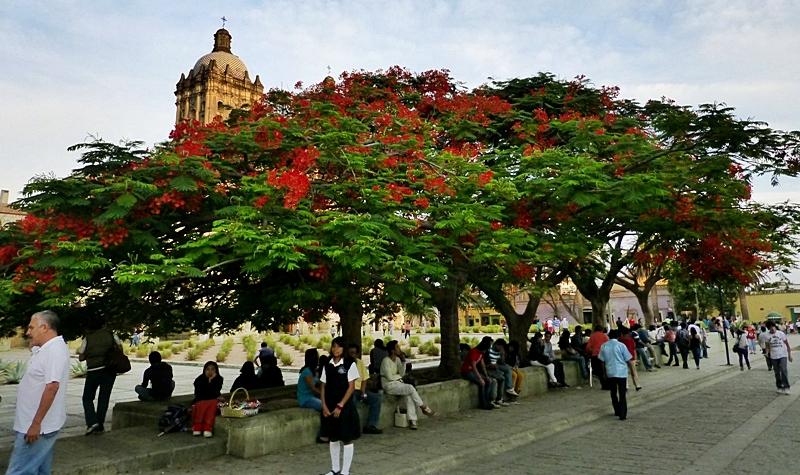 But move around a little, and it becomes obvious all is not well. Even the flower color is wrong ~ But move around a little, and it becomes obvious all is not well. Even the flower color is wrong ~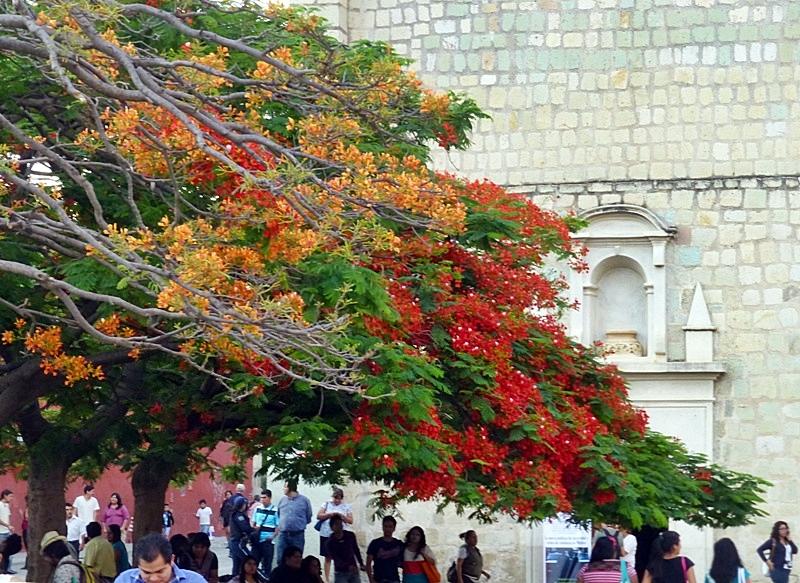 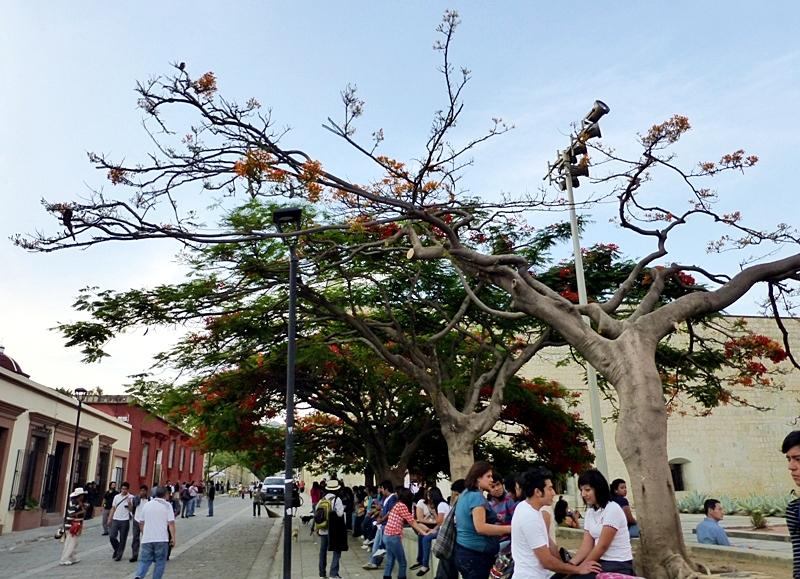  Check out this web photo, taken by Stephen Lea in May, nine years ago: source Check out this web photo, taken by Stephen Lea in May, nine years ago: source Compare that with these pictures I took a week ago: Compare that with these pictures I took a week ago: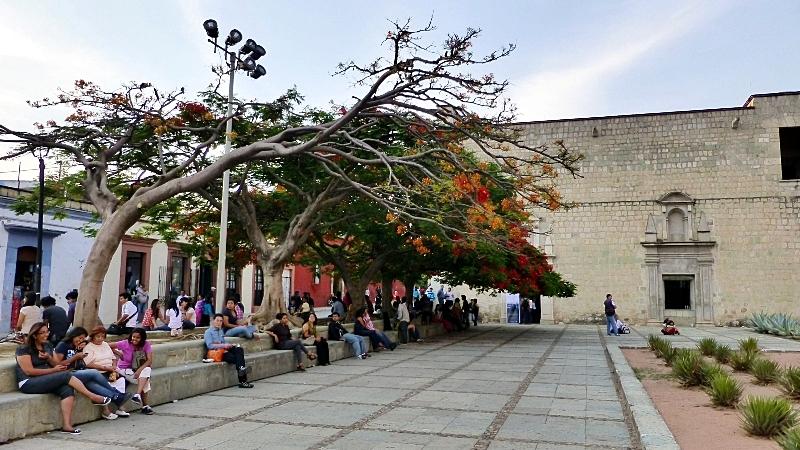 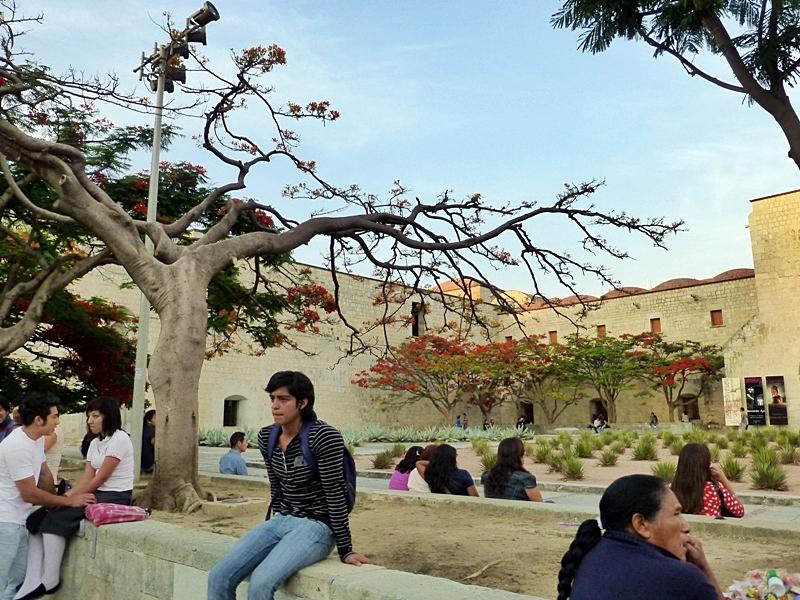 So far, there seems to be no solution in sight. So far, there seems to be no solution in sight. |
|
|
|
Post by anshjain97 on May 10, 2013 15:51:19 GMT
Oh my god, this is stunning! It's very much like many European churches where the exterior gives no clues about the interior. Fabulous.
|
|
|
|
Post by fgrsk8r1970 on May 10, 2013 16:26:22 GMT
Bixa - I just stumbled upon your report and the Church is absolutely amazing in its detail and beautiful. I have never seen anything like it !!! (And I have seen some beautiful churches in Bavaria) I'd love to one day visit Oaxaca to see it.
That said I am sad to see/hear about the beautiful trees in Sto. Domingo - you'd think with all the knowledge we have nowadays they could figure out what is causing them to die.
Thanks for an amazing, detailed report!!!!
|
|
|
|
Post by bixaorellana on May 12, 2013 5:17:42 GMT
Thanks, Ansh & Skater! Hope to see some of your European travels one of these days, Ansh. Skater, a news article said that one of the trees set aside in a nursery as replacement was found to be infected with the same thing as the sick ones in front of the church.  Fingers crossed that you'll make it here one day. I'm curious to see how much will not seem exotic, because of your exposure to Mexican-American culture in Arizona. |
|
|
|
Post by anshjain97 on May 12, 2013 5:48:27 GMT
Sure thing, Bixa. I'm looking forward to write a report on a European city. Cheers.
|
|
|
|
Post by lugg on May 12, 2013 7:29:26 GMT
What a stunning cathedral, such opulence which can never be guessed at from the outside. I had thought this building was all built of honey coloured stone from some of your pics on image bank but now I can also see some of the green granite you refer to in your post. Quite remarkable how different light reflects the colours in the stone in a variety of ways.
My favourite photos though are of the ceilings in the entrance way to the museum, just beautiful.
It is quite awful to see how those beautiful trees are being blighted by the yet unknown disease. I really hope a solution is found and that it does not spread to those trees that still appear healthy. Is it happening in other places in the city or elsewhere in Mexico ?
|
|
|
|
Post by bixaorellana on May 13, 2013 6:47:39 GMT
Thank you so much, Lugg. I can only find skimpy articles in Spanish on the trees, with no mention of this being a city- or state-wide problem. They were planted in 1974. Each article says they're suffering from a "plaga", which could be bugs or disease. There was some waterworks repairs done in the spot where the replacement trees went plus the addition of chemicals to prepare the area for them.  Here are a couple of pictures of the short-lived replacement trees: www.municipiodeoaxaca.gob.mx/not/2013/febrero/010213_3.html |
|
|
|
Post by lola on May 13, 2013 23:15:21 GMT
Breathtaking church, beautifully presented, bixa.
Best wishes for speedy reversal of tree plaga. Such a shame.
|
|
































